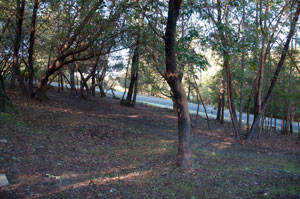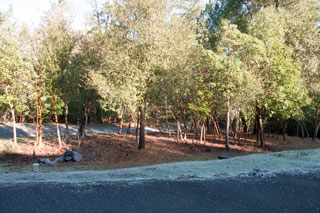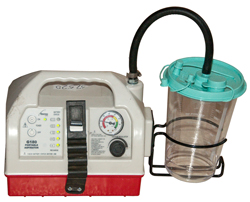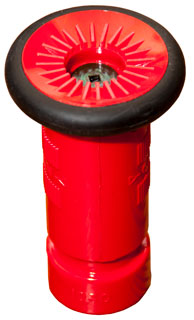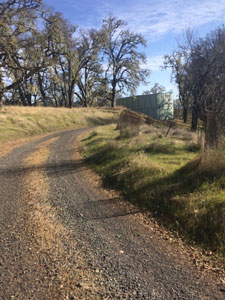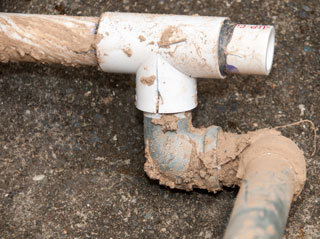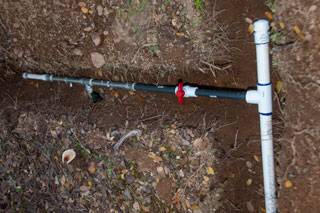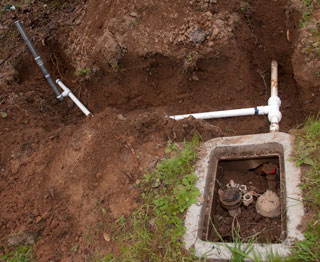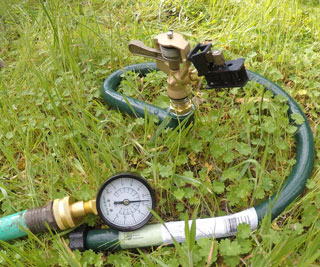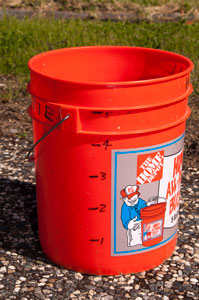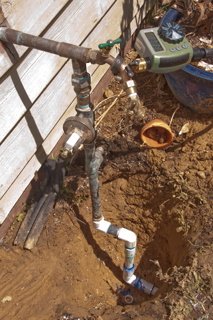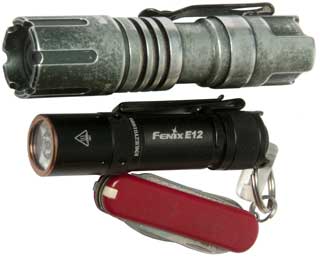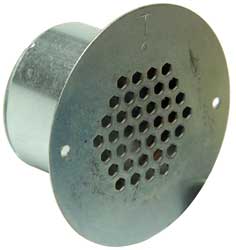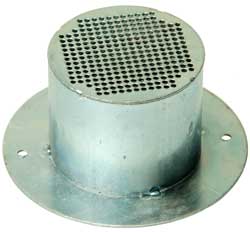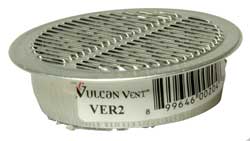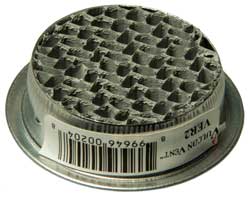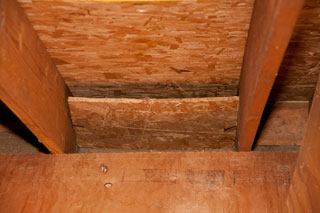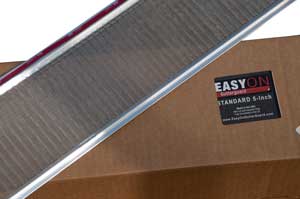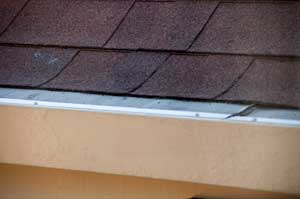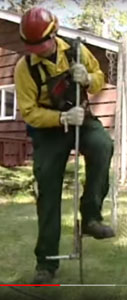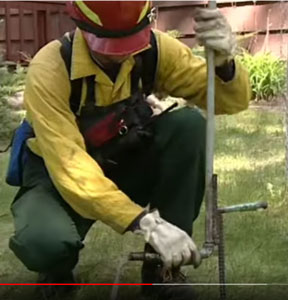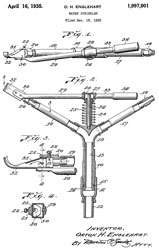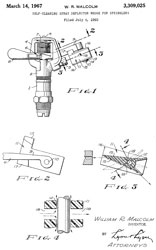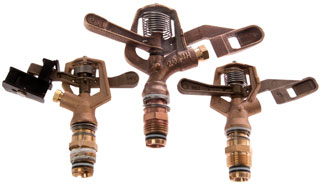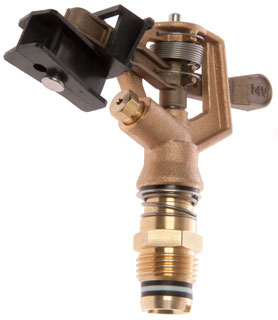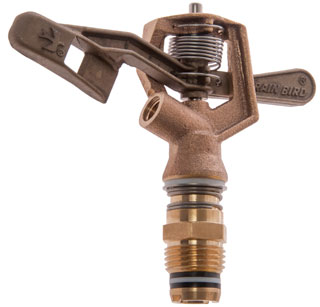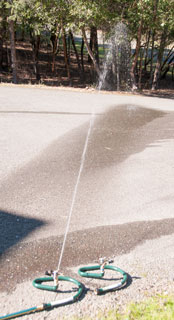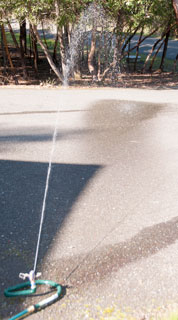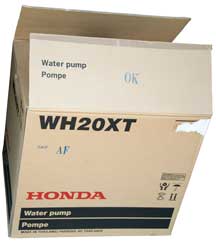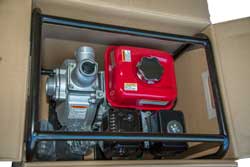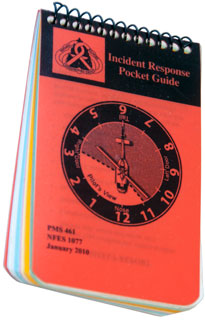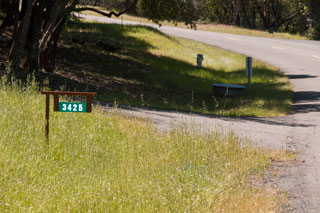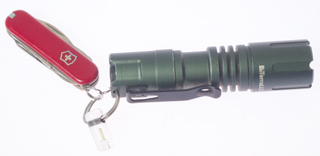Home Fire Protection

© Brooke Clarke 2017 - 2025
Alert Wildfire TV Cameras
Applicability
Protection Steps
Fire Hydrant
Hoses
Pressure Loss Table
Hose Nozzles
Home Water Supply
Local Water District
Head
Flow Rate
Meter
Mains Pressure Water
Flow from New Hose Bib
Pressure Reducing Valve
Meter to House supply pipe
3 Valve Stations on Fire Pipe
Sprinkler Control Valves
Fire Water System
Smith Indian - Fedco Fire Pump - Moved to its own web page
Hot Embers
Handy Hardware
McLeod Tool
Smith Indian - Fedco Fire Pump
Fenix E12 Version 2 Flashlight
CCRadio2
BaoFeng ham Radio
Vents
Gutter Guards
Do It Yourself Defensible Space Inspection (Cal Fire LE-100 form)
Exterior Sprinklers
Rain Rate
Testing impact Sprinklers
Nozzles
Commercial Outdoor Fire Sprinklers
Water Tank Based Outdoor Sprinklers
Honda WH20XT Water Pump
Fire Insurance
Shelter in Place
Mass Notification
Ham Radio
Fire Weather
Map Your Neighborhood
Phos-check Retardant
Suppliers
References
FireWise
House Numbers
Evacuation Zone
Backup
PG&E
California Codes
Smoke Detectors - 2024 UL 217
Related
Links
Background
After getting an fire evacuation call at 1 am early Monday morning 9 October 2017. It turned out that I did not need to evacuate, but the Mendocino lake complex fire was lighting up the sky. Here are photos of fire attack helicopters and aircraft flying over my house fighting the fire. Since then I've been studying what I can do to reduce the chance that my house will burn. The three elements of fire (Wiki) are: fuel + air + heat.
There are two sources of water used for the experiments on this page. The first were done using the existing hose bibs. These come out of the house and are after the pressure regulator (about 40 PSI). Later I tapped into the line just past the water meter where the pressure is more like 100 PSI.
Defensible Space means a space that firefighters can defend. Survivable Space means a space that will survive on its own.
see: Fire Safe Marin: Fire Chief Debunks Defensible Space Myth, 20:44 - Marin county fire cief goes into some detail, with examples, of what is and is not defensible space.
Alert Wildfire TV Cameras
There are a number of TV cameras with near IR capability located in the Sierra Mountains specifically aimed at viewing wild fires.
http://www.alertwildfire.org/
Mendocino County cameras are under North Bay.
http://www.alertwildfire.org/northbay/index.html?v=81e003f
There seems to be one or two cameras at each of the camera locations. Each camera can be panned and zoomed. They take a still photo about once a minute. The cameras are pointed to fires (prescribed burns included) by authorized personal and are mainly used to help fire fighters. But anyone can can look at the current photo or play back a stop-action video of the last (select: 15 minutes, 1, 3, 6 or 12 hours). Note you can see the stars rotating in the night shots.
Once you are on a page showing some cameras, in the upper right is a camera icon that when clicked will show an alphabetical list of all cameras, click again to close the list.
The upper right window is a map view where you can select what layers (icon) to display: Camera Field of View, Lightning Intensity, Satellite Map, Hybrid Map, Street Map, All Camera Targets.
Note that with no boxes checked each camera shows up as a triangle with a point and notched tail. The point of the triangle points at the center of about a 60 deg field of view.
Alert Wildfire home page
Alert Wildfire Regional page
Fire Camera Display Setup
Fire Camera Display Setup - alphabetical order -
for example when 4 cameras are selected:
Cameras: Axis-Cleland1,Axis-CowMtn1,Axis-CowMtn2,Axis-RedwoodValley
and VIEW pressed you get a four camera split screen that updates every minute.
YouTube: nvseismolab - Videos has short clips of fires starting.
If you watch a few of the recent 1 minute videos you will learn what a fire looks like when it is just starting.
This is NOT a way to watch an active fire. Use one of the two web pages above for that.
Related Info
FlightRadar24
- Link to my Lat Lon (If you click on a plane, the URL changes to that tail number)
FlightRadar24 shows the air attack planes, helicopters, &Etc.
YouTube: blancolirio - information about the aircraft involved
Applicability
When I started this page I thought it would only apply someone living in a jungle or forest. I also thought fire spread like a water wave where the fire front moves and ignites all the flammable material in it's path. Now I know both of these ideas were wrong.
How Fire Spreads
Fire can spread like a wave with direct flame contact if it has fuel. Fire can spread by radiant heat, but that requires both a large fire and long exposure. Most trees burn too quickly to ignite houses at one hundred feet away, but can ignite nearby trees. Fire also spreads by means of firebrands or hot embers (Wiki). But these embers are small and can only ignite tinder (Wiki: Tinder) such as dry leaves, pine needles, fir bark, &Etc. which in turn lights kindling (Wiki) such as small plants with dead branches or plants/bushes that are dry, or dry wood like wood shingles or wood fencing. Kindling can in turn light larger pieces of wood, like wood siding on a house, 4x4 posts &Etc..
Some scenarios are:
- A crown fire is advancing on your property. - A defensible space fire break is needed to keep the fire from you house.
- A crown fire is within a mile. - The house needs to be ember safe AND the defensible space fire break is needed to keep vegetation from igniting.
The key factors in the spreading of fire are: Weather (mainly humidity and wind), topology (fire tends to move up hill if there's no wind) and Fuel (fire can not spread if there's nothing to burn).
The above ideas are codified in the Notice of Defensible Space Inspection. In the upper left corner on the back side: "Hardening Your Home - Flying embers can destroy homes up to a mile ahead of a wildfire. Prepare (harden) your home now before a fire starts."
Cal Fire Property Inspection Guide - 65 pages
How fire spreads has nothing to do with the location of a house. That is to say houses in a city or suburb need defensible space just as do houses in the jungle or forest. But there's a problem in that the spaces involved are:
The problem for city lots is they are too small to meet the zone sizes, hence these rules are not applicable. But, fire does not recognize this limitation.
- Remove all branches within 10 feet of a chinney or stove-pipe.
- Zone 1 (within 30 feet of the house) remove all tinder and kindling, no wood piles
- Zone 2 (between 30 and 100 feet of the house) rules about removing plants, shrubs and trees
Protection Steps
Remove Fuel
The first thing is to remove a lot of the undergrowth that is potential fuel. The street was not visible in either of these views a couple of months ago. More needs to be removed in these views and in adjacent areas. When I first moved here you could not even walk in these spaces. Notice that the vegetation is so dense across the street that you can not walk there.
Fig 1 Click photo to see larger version,
then look just to the left of the foreground tree
(at the street) to see fire hydrant.
Fig 2
2 April 2018 CAL Fire clearing brush in the right of way
in front of my house: https://youtu.be/PhVr-hTdiFk
Fire Fighting Equipment
As part of the second step I'm investigating getting some wildfire fighting equipment. A number of people in the recent fire saved their houses or the houses of a neighbor/friend/relative by fighting it themselves. Note that there's no way the local fire departments could respond to all the calls for help.
My son who lives in Santa Barbara says there's almost a fire engine in everyone's driveway to protect houses from the Thomas Fire (Wiki).
Areas that were evacuated and they had police road blocks, with the rule once you leave the area you can not return. But they would not force anyone to leave. So those who stayed had a neighbor/friend/relative who could meet them bringing needed supplies.
Fire Apparatus (Wiki) "any vehicle that has been customized for use during firefighting operations."
Fire Hydrant
It happens that there's a fire hydrant in front of my property. It's made by Clow and is a wet barrel type.
Note the stem on fire hydrents is a pentagon (5-sided) that's to say it is NOT like a hexagon (6-sided) bolt so normal tools will not fit, nor will adjustable wrenches work. Do not use any tool other than a purpose built hydrant wrench.
In warmer climates, like here in California, the valves are directly in line with the outlet fittings and so can be used for flow control as well as on/off.
Note that the outlets are 2-1/2" and 4-1/2". The nuts are pentagon shaped, not the hexagon shape that's commonly used on nuts and bolts, so standard tools will not work. Also vice grips, pliers &Etc. will fail and damage the pentagon shape.
Fig 1

Fig 2

I'm trying to learn why this and other hydrants on my street are painted white.
As of 2 Jan 2018 I have not had a return call from the local fire department (I think they are in S. California on mutual aid - Wiki).
Hoses
The wiki page on fire hoses misses some the functional differences in fire hoses (Wiki).
Wall Stiffness
I would say the most important hose parameter is wall flexibility.
Flexible wall tubing will collapse when a vacuum is applied. The lower radiator hose in a car (feeds the water pump) has a metal helix inside to prevent collapse which would have the effect of blocking water flow.
Note that the tubing connected to a vacuum pump has flattened.
Note that the stiff wall tubing does not collapse.
Common garden hoses (Wiki) have stiff walls and are easy to use. For example if a common garden hose is lying on the ground and the faucet is turned full on, the hose will not move. You can hold a garden hose nozzle in one hand and point it left or right without resistance from the hose.
Cloth fire hoses (Wiki) have very weak walls which makes them much lighter in weight and store in a much smaller volume than stiff wall hoses. But the price paid is that flexible wall hoses can not be used for suction applications, like on the input to a water pump. Also flexible wall hoses want to straighten out when pressurized and so require more effort to aim a nozzle that stiff wall hoses. A pressurized 3" fire hose is very difficult to work and may require more than one person at the nozzle. Monitors (Wiki) are water nozzles that are anchored to avoid problems with the pressurized hose.
Flexible wall hoses will not flow water when folded, for example when in a pin rack (Wiki photo) inside a building or when on a reel. These hoses need to be pulled out so there are no kinks before the water is turned on.
Cloth hoses without a waterproof liner need to be dried after use to prevent rotting. Hence the hose drying towers at many fire stations.
Stiff wall "Booster" fire hoses are typically mounted on a reel with a swivel fitting allowing them to be pressurized all the time. Just pull out and open nozzle when at the fire. These are very similar to garden hoses, except slightly larger in diameter.
The key advantages of flexible wall (fire) hoses is that they are lighter in weight, lower in cost and take much less storage space than stiff wall hoses. The early fire hoses were made only from fabric and so would degrade if left wet. This is why most fire stations have a tall hose drying tower. More modern fire hoses have linings that are not effected by long exposure to water and so don't need to be dried prior to being stored.
Pressure Loss Table
For 100' & 25 GPM i.e. my normal house water meter.
This means that using a 1" hose is a major improvement over using a 3/4" garden hose. The ratio of loss is about 7X.
Hose
PSI
3/4"
68.8
1"
9.4
1-1/4"
5.0
1-1/2"
1.5
You only get a 2X improvement going to a 1-1/4" hose so probably not worth the cost & weight for a home installation.
Sizes
Note 1: This is the classic handline and requires training and strength to keep under control. Larger diameter lines are refereed to as supply lines, i.e. lines are are not moved once in place.
Hose Size
Wall
Comment
Area
Wt/10'
3/4"
Stiff
Booster
used on pressurized reels
0.44
1"
Stiff
0.79
1.5"
Stiff
1.77
3"
Stiff Suction (pump inlet)
7.1
4"
Stiff Suction (pump inlet) 12.6
5"
Stiff Suction (pump inlet) 19.6
6"
Stiff Suction (pump inlet) 28.3
5/8" & 3/4"
Flex
3/4" Garden hose Fitting
<= 0.44
1"
Flex Forestry 0.79
1.5"
Flex Forestry 1.77
2"
Flex
Forestry
3.14
2.5" Note 1
Flex Attack
Matches hydrant
4.9
3"
Flex Heavy Duty - Supply line
7.1
4"
Flex
Heavy Duty - Supply line 12.6
5"
Flex Heavy Duty - Supply line 19.6
Construction
The early fire hoses were made of leather made much the same way that leather boots were made. Then came hemp fabric hoses that would leak water when first wet but after the fibers swelled would be water tight. These fabric hoses would be damaged if left wet and to fire houses needed drying racks to dry hoses.
More modern hoses have liners so that the fabric does not see water and so do not need drying racks. This also means these hoses are more suitable for home protection since they can be used for practice.
Water Pump (Wiki)
There are many types of pump, but a key property for a fire pump is self priming capability. This requires a positive displacement type pump that can generate a good vacuum on the input so as to suck water into it. (This really is just creating a vacuum so that the atmospheric air pressure can push the water into the pump. For fresh water with a density of 62 pounds per cubic foot or 0.43 PSI per foot of head and an atmospheric pressure of 14.7 PSI the maximum depth a pump can pull up water is about 34 feet.)
Hose Nozzles
There is a plethora of nozzle types, sizes where there is a special application where the excel.
I got this United Fire Safety model 1030 nozzle because there are a family of them is sizes from 3/4" garden hose (my unit) and larger fire hose sizes. It can be adjusted from off to wide and narrow streams. But . . .
I only have 7.5 Gallons per minute at the strongest hose bib (probably due to the combination of 150+ feet of 1" pipe from the meter to my house and the Pressure Reducing Valve that's set for over 60 PSI pressure drop, so is also greatly restricting the flow. The nozzle is rated for 8 to 22 GPM so performs poorly with 7.5 GPM input.
Fig 1 UFS 1030 3/4" Garden Hose Nozzle
with 25 GPM input at 116 PSI it works well.
Fig 2 Granger 572-0711 Nozzle _ Everbilt LFA-679 3/4" FH x 3/4" MIP
This adapter also has an internal 1/2"FIP thread that's no being used here.
The idea is to change the 3/4" female pipe thread in the nozzle into
3/4"Garden Hose female threads.
This nozzle, like the UFS nozzle to the left, is anemic when used on the low pressure/flow house hose bib.
but with 60 PSI and about 10 GPH max flow. But on the new hose bib with 106 PSI and 25+ GPM it throws over 50'.
The nozzle orifice is 0.261" (slightly more than 1/4")
GPM = 29.72 * D2*SQRT(PSI)
= 29.72 * 0.261 * 0.261 * SQRT(106) = 21 GPH just under the available water flow of 25+ GPM.
There's a noticeable reaction force pushing back from the nozzle.
Nozzle Reaction = 1.57 * D * D * NozzlePSI = 1.57 * 0.261 * 0.261 * 106 = 11 pounds
This is not enough to be a problem while holding, but would be if not holding.
Fig 3 1" Smooth Bore Nozzle
Fire Hose Direct: BSP1B
has a 5/16" (0.3125") opening (the next size larger than the GHT nozzle to the left.)
and is rated at 22GPM @ 100 PSI which matches my water meter.
Approximate distance: 60'
Home Water Supply
Also see Water Pressure.
Local Water District
There are two tanks above me operated by the local water district. Many years ago there was a multi-day power failure and the water company brought in a big generator. I asked then why the generator and the answer was that they needed to keep the tank full in case of fire, i.e. not about supplying domestic water to houses.
Both of the local water tanks are much higher in elevation than me so there's plenty of pressure. It may be that the water levels in both tanks is the same?
Tank on ridge & Pump house
about 80,000 Gallons
Tank on hill, no pump
about 200,000 Gallons
Head
If my pressure at the meter is 106 PSI then the water level in the supply tank is at 106 (P/sq in) * 144 sq in / 62.5 Lb/cu ft = 244 feet above my meter.
My meter is at about 1,000 elevation so the water level in the tank is at about 1,244 ft. The pressure at any other meter fed from this tank can be calculated from knowing their altitude.
Flow Rate
The flow rate is determined by a number of things:
The size of the meter
The size and adjustment of the house pressure regulating valve
The size of the piping between the meter and the nozzle where the water enters the atmosphere
Elevation difference between the meter and outlet.
. . . .
In order to use exterior sprinklers where you can not use a line powered timer (the power probably will go out), it's necessary to have an adequate flow for all the sprinklers to run at the same time. At my house the water pressure at the street (fire hydrant) is 106 PSI and it's less than 10 feet of elevation below the house foundation elevation.
Meter (Wiki)
The size of the water meter limits the flow. Most houses have a 5/8" - 1/2" meter and the maximum flow is about 22 gallons per minute.
Table of flow rates for water meter size.
Size
GPM
5/8" - 1/2"
common house meter
22
3/4"
32
1"
50
1-1/4"
67
1-1/2"
79
2"
94
Mains Pressure Water
By adding a hose bib between the water meter and the pressure regulator there will be access to the full pressure and flow from the meter. This will be very close to water meter so pipe loss will be negligible. Separate 1" pipe will be laid for the new sprinkler-hose bibs. 1" is good for 12 Gallons per Minute, so maybe will up the pipe size depending on the final flow rate for all of the sprinklers. The existing 1" pipe feeding the house, sprinkler system and hose bibs attached to the house will remain.
DO NOT USE METAL FITTING INSIDE PVC FITTING!
See Fig 5
First System - with Fatal Flaw
From bottom to top, as water will flow:
1" compression "T" with threaded side outlet. This will be inserted into the existing 1" line from water meter.
1" thread to slip PVC fitting
1" PVC pipe
1" PVC 45 deg
1" PVC pipe
1" PVC "T" with threaded side outlet. The in line fitting has a short 1" pipe and cap for extending this line.
The threaded side outlet has:
2 each Galvanized street "ells" which feed a couple of 1" galvanized nipples topped with a standard hose bib with 1" NPT inlet and 3/4" Garden hose outlet.
The metal stake is commonly used for concrete forms.
Note the two street ells are arranged so that if the pipe holding the hose bib is pushed in any direction it will not break the below ground PVC. That's to say the two street ells act as a universal joint. For this to work the male threads on the bottom/first street ell must be horizontal.
Note: All the PVC joints were made after light sanding and application of PVC primer. Then left to cure overnight.
To be installed the next morning so there will be minimal time without water.
Note: all threaded joints made with white Teflon tape applied so that no tape can come loos inside pipe. That may cause a problem with a sprinkler nozzle.
Fig 4 Leaking - meter turned off - no water in house.
Note leak at riser, not at compression fitting.
Fig 5 Crack in PVC "T"
"Female plastic threads on male metal threads are the most vulnerable to over-torqueing, so avoid them if possible."
"Do not use a plastic female threaded connector with a metal male connector! The joint will almost always leak or break."
Fig 6 Second System
Now that I know there's plenty of water flow available,
the system is upgraded to 1-1/2" pipe and the first
hose bib located in the correct spot.
The existing 1" compression T left in place, then step up to 1-1/2" and valve.
Note: 1-1/2" PVC is good for 30 GPM with a pressure loss of 2.28 PSI per 100'.
Fig 7 1-1/2" pipe on the way to first Hose Bib.
Fig 8 After 1-1/2" T, a reducer to 1".
Waiting for cement to dry overnight, then will install 1" Hose Bib riser.
Valve prior to 1" line.
Both 1" and 1-1/2" pipes end with threads so easy to extend either one without shutting off house.
Fig 9 RainBird 29J (5/32") two valves
(third main line valve in box just to the left)
The sprinkler does not work when higher because of the
leaves on nearby plants.
Flow from New Hose Bib 1st try
The hope is the flow will be near 22 GPM, or about 14 seconds to fill a 5 gallon bucket.
Fig 3 New hose bib installed near water meter.
New hose bib near water meter - Pressure 116 PSI
at end of short garden hose.
Video of filling 5 Gallon bucket
(filmed using GoPro Hero 5 Black)
Time to fill: 12 seconds
GPM = (60 sec * 5 gal)/12 sec = 25 GPM
The flow is probably more because I filled the bucket to the brim.
The 5 Gallon fill line is just below the top ridge not the brim.
Video of Rainbird 14VH running at 116 PSI. (normal speed)
Rated for 20 to 60 PSI.
The distance is slightly less than at 45 PSI.
WeatherTec 10-10 1/2" Full Circle Sprinkler 3/32"FC Nozzle (240 fps)
This 25 GPM flow is the total flow for all sprinklers that are running at the same time.
Pressure Reducing Valve (Wiki)
The hose bib just after the pressure regulator tests at 44 PSI static with a Rain Bird P2A pressure gauge.
This hose bib will fill a 5 gallon bucket in 40 seconds. 5 * 40/60 = 7.5 Gallons Per Minute, and the pressure on the other bib is 20 PSI.
The difference between the static pressure (44 PSI) and the dynamic pressure (20 PSI) is the "Fall Off" (24 PSI) in pressure regulator speak.
The water district says my water meter should flow 25 GPM at the meter. So the flow limitation is caused either by the 1" pipe between meter and regulator and/or the pressure regulator. The meter does flow 25 GPM see Flow from new hose bib above.
12 April 2018 - Increased the house pressure to 60 PSI and the flow is now about 10 GPM, up from 7.5 GPM. This means a couple of 29JH sprinklers with the maximum 5/32 nozzles would work for the roof when fed from the house plumbing. This greatly simplifies getting pipes to where they need to be. A slight pressure decrease will result from the 30+ foot elevation rise above the ground. A 1" pipe will save a couple of PSI in pressure loss at 5 CFM.
There may be sprinklers that are tapped off the line between the meter and pressure regulator, need to test to see if that's the case. Not the case the pressure at the sprinkler is 45 PSI, so they are after the house pressure regulator valve.
This would also explain why I've had so many problems with theirrigation system leaking. Two or three valves have failed in such a way that water leaks, in one case slow, and in another case the meter reader knocked on my door because the fast dial on mywater meterwas spinning very fast and had been for less than a month.
1" Water line coming from meter goes to pressure regulating valve then a "T" to the house and a hose bib. The hose bib has a "Y" with a battery powered timer and another hose bib (rather than use the "Y" ball valve).
PS I've had problems with leaking faucets inside and leaks at the unions here at the entrance. Here the plumber needed to redo some of the PVC fittings to (attempt) fixing the leak.
After waiting the normal time for the PVC glue to set up they opened the meter valve and the PVC fittings blew apart. The plumber said my water pressure was much higher than he expected (maybe 150 to 200 PSI).
I now think the pressure reducing valve is cutting down the flow from 25 GPM to 7.5 GPM, that's a lot!
For my case were there's a large pressure drop required to keep the pressure inside the house low enough that the appliances and fittings can handle it, more than one reducing valve may be needed. Note that the hose bibs are plumed from inside the house and to get good flow the whole house needs good flow. Also, if the hose bibs were connected before the pressure reducing valve then burst hoses would be the likely result.
Zurn-Wilkins 70XL water Pressure Reducing Valve (PRV). - 34-NR3XLDU (3/4") - 1-NR3XL (1") -
There might be a relationship between the PRV size the the maximum flow you can get (based on Watts LF25AUB-Z3, LF is Lead Free, not Low Flow). But this is a function of the specific PRV.
Idea: "Reduced Pressure Drop", on the data sheet plot, varies from 0 PSI to 25 PSI for the Watts LF25AUB-Z3 and is the Y-axis scale on the Capacity plot. Flow (GPM) is the X-axis scale.
1651237 Pressure regulator, Wilkins James M, Adolph Mueller, Nov 29, 1927, 137/327, 137/464, 137/328 -
Reduced pressure drop probably is the same as "Fall Off", i.e the difference between static and flowing pressure on the output of the valve.
2519805 Pressure regulator valve, Wilkins James M, Aug 22, 1950, 137/505, 70/151.00R, 137/505.44, 210/432, 251/357, 137/549, 137/543.19 - adds strainer and removable mechanism without removing body from pipes.
2704551 Valve Mechanism , E.K. Ralston, Mar 22, 1955, 137/494, 200/83.00B, 137/505.44, 92/95, 251/337, 200/83.00P - uses Belleville washer (Wiki) in addition to the coil spring to get greatly improved GPM as pressure varies. In the PRVs that only use a coil spring the flow rate depends on the pressure drop.
Meter to House supply pipe
The flow through a pipe should be under 5 feet per second according to the two following references. At higher flow rates the friction loss goes way up, see Engineering Tool Box, RainBird Sch 40 PVC.pdf. This means I probably will need a new much larger pipe from the meter to my house. The pipe needs to be sized to flow what the meter can deliver.
Indoor Fire Sprinklers
A friend that lives in Los Altos did a remodel on his house that required installing indoor fire sprinklers. As part of that a new pipe was run from the water main, bypassing the house meter, to the sprinkler system. The idea is that even if the homeowner does not pay their water bill and the water utility shuts of and locks the meter, the sprinkler system will still function. Another aspect of this is that the new pipe will be sized for proper water flow, i.e. much larger than the normal house feed.
5 feet per second is the same as (5 * 60) = 300 feet per minute. The RainBird PVC sch 40 table does not show flows above 20 feet/min and uses 5 feet/min as the limit for use.
The area of a 3/4" pipe is 0.4417 sq in or 0.4417 / 12 / 12) = 3.0679E-3 sq ft.
25 cu ft of water will fill a 3/4" pipe that's 8149 feet long and it takes one minute for it to move through the pipe, much faster than 300 Feet in a minute.
What size should be pipe be between the water meter and the pressure reducing valve?
25 cu ft / 300 ft/min = 8.3333E-2 sq ft or ( 8.3333E-2 *144) = 12 sq in. or 1.95" ID or a 2" pipe. This is very different from the 1" line that's now there.
If I get a 1" water meter that can flow 50 Gal/min then:
50/300 = 0.166666 sq ft or 24 sq in or 2.76" ID pipe so a 2-1/2" or 3" pipe may be a better choice for a retrofit (the RainBird pdf shows 2" as the minimum size pipe for 50 Gal/min)
Filling a boiling pot in the kitchen.
While flow restricting faucets will save water when they flow into the drain they also waste time when filling a pot. When the whole house has restricted flow rates even filling the bath tub takes much longer than it used to. It might make sense to have a high flow rate (>>2 Gal/min) faucet in the kitchen for filling pots.
It may be that adding a fire water line from the meter is a better idea than replacing the 3/4" pipe to the house. the new line would feed sprinklers and also new high flow standard 3/4" garden hose bibs located maybe 50' from the house. That way they would have the same coverage as a 100' garden hose connected to the house, but with much higher flow rates and pressure so better for use by fireman.
Note that in the 9 October Mendocino lake complex fire many households turned on sprinklers and left them on almost draining the water tank which was needed for the fireman. So water needs to be conserved. I'm looking into what size of impulse sprinkler makes the most sense. If the flow rate is very low then there might not be enough time to put down enough water and turn off the sprinkler. If the flow rate is high enough to put down a couple of inches in a short amount of time then it might not generate as much humidity as would a lower volume sprinkler.
3 Valve Stations on Fire Pipe
April 2018 - my current idea is to leave the existing pipe feeding the house and add a new pipe just for the new hose bibs and outdoor fire sprinklers. There will be a number of stations on this pipe where each station has a hose bib and a 1/2" sprinkler. Three valves: 1. the hose bib, 2. a main inlet valve and 3. a sprinkler valve. A master valve near the water meter on the new supply pipe can turn on or off all the stations. The station nearest the underground main valve is shown in Fig 9.
Station Valve Positions
Mode
Main Valve
Sprinkler Valve
Hose Bib
Comment
Gardening
Open
Off
as needed
Normal gardening hose bib
Winter
Closed
Open
Open
air in sprinkler and hose bib = Freeze protection
Fire
Open
Open
Closed
Sprinkler on
Dual
Open
Open
Open
both station sprinkler & sprinkler on garden hose
Note that the valve near the meter will turn on or off all the stations which might be connected just as a sprinkler, just as a garden hose feed sprinkler or both.
The station will include freeze protection for the pipes and main valve in the form of a very small building.
April 2018 - this can be reduced to 2 valves if there is a main shutoff valve in the pipe supplying the sprinklers. See Fig 9 for the current (May 2018) setup.
The Main Valve is in the underground box.
The hose bib and sprinkler valves are visible at each station.
Station to station distance is 70 feet.
Sprinkler Control Valves
In the late 1950s Fluidics (Wiki) were developed and I think one of the first applications was the lawn sprinkler control valve.
3005616 Flow control valve, Harold A Seele, App: 1956-08-27, 251/46; 251/30.05; 137/218-
3799496 Pilot operated control valve, H Esten, App: 1971-04-22, 251/30.02; 137/98; 251/46 - "1. The control of large amounts of power by the direct application of small amounts of power."
Also see the Army Emergency Respirator which was an early fluidic device.
373104 Electric Valve Controller, G.M. Sternberg,, Nov 15, 1887, 236/84; 236/80R; 251/61; 236/77; 251/11; 310/21 - appears to use fluidic principles!
Fire Water System
I've been thinking about how to fight spot fires, probably started by hot embers for a number of years. Already installed is a row of sprinklers between the house and road and this should be extended. Another idea has been to install a 1" Rain Bird type sprinkler at the top of a fireplace chimney. It would use up all the water from the meter (about 25 GPM @ 100 PSI) and would cover the roof and quite a bit of the surrounding yard. But now that I've cleared the yard and installed metal gutter covers (Aug 2020) so there's no longer a problem with kindling in the gutters.
2020 Oct 15
Hose Size
The current idea is to have a system of hoses, fittings and nozzles that are smooth bore and have a long throw. This cold be used to put out spot fires quite some distance (50' or more) away. The pressure loss table shows that a 1" hose is about 7X times better than a common Garden Hose. While a 1-1/4" hose has twice the capacity of a 1" hose the added weight and cost doesn't seem to be worth the price for what can be done with a meter that can supply 25 GPM @ 100PSI. So the fire water system should be built using 1" hose.
2020 Nov 21: Flow rates at 100 PSI
Hose
max
GPMH2O Wt #/100'
3/4" GH
29
19
1"
62
34
1-1/2"
180
77
Pressure Drop at 25 GPM
Hose
PSI
drop/100'
3/4" GH 75.6
1" 18.6
1-1/2" 2.6
My neighbor has purchased 1-1/2" NH (same as NST) hose, 1-1/2" hydrant adapter and hydrant wrench along with a nozzle. This turns out to be a standard on fire trucks and is the smallest fire hose type valve you can readily buy. I have not been able to find a fire hose valve for 1" (either NH or NPSH).
Adapters
1" & 1-1/2" sizes, Male & Female, NH & NPSH threadsLinks to Fire Hose Direct
1" M NH
1" F NH
1" M NPSH
1" F NPSH
Cap
1-1/2" M NH
37R1P15
1-1/2" F NH
T37R151P
37R151P
TACR15
BCR151-1/2" M NPSH
1-1/2" F NPSH
T37R15P1P
37R15P1P
ACR15 Cap
BCR1P
Note that the columns for 1" M NH and 1" F NH have no entries. This suggests that 1" hose should only have NPSH threads.
But there are adapters that will allow connecting a 1" NPSH hose to a 1-1/2" NH hose.
Also you can connect a 1-1/2" NH hose (nozzle) on the end of a 1" NPSH hose.
The Forestry Nozzle (A1TTP) only comes with NPSH threads. This is a valve with Off - outlet 1 - outlet 2 where the outlets are 3/4" GHT so could be used to connect one or two garden hoses to a 1" NPSH hose.
I started to add 3/4" Garden Hose Thread (GHT) to the above table, but erased that column because that hose severely restricts flow. Even 1" hose has noticeable loss.
See the above table under Hose Size
Sequence of Sizes and Threads
2020 Nov 21:
1-1/2" NH from either a dedicated fire faucet or from a 2-1/2" F NH to 1-1/2" M NH adapter on an hydrant to:
either: a 1-1/2" NH Nozzle, 1-1/2" NH hose, 1-1/2" NH Gated Wye Valve,1-1/2" F NH to 1" NPSH adapter (37R151P)after looking at the pressure drop table above I strike out the use of 1" hose.
Hose Thread
The fire hydrant 2-1/2" and 4" outlets use Fire Hose (FH) threads. Some of the nozzles and fittings for 1" hose seem to only be available in National Pipe Straight Hose (NPSH) thread (Wiki). So, tentatively, I'm looking of using NPSH threads.
Hose Wall Stiffness
This can be a mix of stiff wall Booster hose and cloth wildland fire hose. All with the same 1" thread. I started out thinking of an all booster hose system using hose reels that have a rotating joint to allow the hose to be stored under pressure. But that has potential problems with freezing and costs a lot. A more flexible system would use cloth hoses, "Y" fittings with ball valves and a mix of hoses of different wall types and lengths.
Water source
By adding new underground pipes, probably 1-1/2", with risers and dual valves, one for the standard Garden Hose Thread (GHT) and one for 1" fire hose the system could be built out. But a much lower cost option would be to just add a riser with a 1" fire hose thread at the capped 1_1/2" capped pipe. Then 1" hose can be run where ever it's needed.
Another option is an adapter from 2-1/2" fire hydrant to 1" NPSH and an hydrant wrench that can both turn the pentagon valve post and open the 2-1/2" cap as well as tighten the 2-1/2" adapter. This has another advantage in that the whole kit consisting of hoses, fittings, nozzles, &Etc could be taken to the location of a nearby fire and connected to any other fire hydrant. Note most nearby hydrants only have the 2-1/2" FH outlet which I believe is a California standard.
Compatibility
I have a call into a neighbor who has purchased a 2-1/2" hydrant adapter and wrench. Need to find out to what hose size and thread.
Forestry Shutoff Fire Hose Clamp & Mics Fittings
Allows stopping water flow in hose so that a fitting/nozzle can be changed without going back to hydrant to shut off water.
Fire Hose Direct FSC - for 1" or 1-1/2" hose.
6385820 Hose strangler, Len Hrominchuk, Wildfire Enviornmental (Wajax), 2002-05-14, - now part of WaterAx (new design Strangler & Pouch)
The Gated Wye "Y" Valve FHD FABV1515 allows both turning of the water to connect hoses and using reducing fittings to go to smaller hose sizes.
McLeod Tool
This allows putting out spot grass fires without using any water.
Fig 1
Hot Embers
It turns out that contrary to popular belief a key factor in the spread of fire is a storm of hot embers landing on something that acts as kindling. The hot embers will not start solid wood on fire. This explains the sight of a housing tract in the recent (October 2017) Santa Rosa fire where many houses, but not all of them, where burned to the ground. Yet this was a suburban housing tract, not a forest. That's to say it was not contact with fire that started the houses on fire but rather hot embers falling on dry leaves, pine needles or other kindling the flame from this then set something on fire, like a wood fence, which acted as a wick to the house. I say a storm because there's going to be thousands of these embers coming from the main fire and landing like rain down wind. If a house has nothing connected to the wood siding, like foundation planting, then even after the owners leave it may survive the ember storm without any outside help. Watch the videos in the box below so see how this works. There are many problems that need to be addressed, but a lot can be done to protect your house and out buildings.
The web pages of CCI (below) differentiate "Defensible Space" and the effect of embers. They are saying the "Defensible Space" on it's own is not adequate. I would agree. "Defensible Space" might be thought of a part of a plan to prevent ember fires and minimize flame front fires.
'
YouTube videos featuring Jack Cohen, Steve Quarles and other experts.
NFPA: Wildfire: Prevent Home Ignition: Part 1, Part 2 - firebrands (small hot embers) are the dangerous things, not the crown fire. The embers start things that act as kindling which in turn can start the house on fire. So, eliminating the kindling is key to preventing house ignitions.
NFPA: Your Home Can Survive a Wildfire (13:19)
NFPA: Firewise Virtual Workshop - Power of Embers (1:00:26) - http://firewise.org/ - Wind tunnel that can hold a full size house. Steve Quarles
Radiant Heat Versus Firebrands (embers) (3.33)
Protecting Your Home From Wildfire (28:51) Jack Cohen - examples of homes that burned and evaluation of homes that did not - details
Wildfire! Preventing Home Ignitions (19:26)
Fire Behavior in the Wildland/Urban Interface (21:07)
Fire dynamics (4:57) - smoke from heated wood is flammable
IBHS - IBHS Research Center Ember Storm Test Highlights (4:18) - Today Show - IBHS Research Center Ember Testing (2:55)- Insurance Institute for Business & Home Safety (IBHS) - has a wind tunnel with a bunch of NIST firebrand generators - "embers" Play List - Gable End Vents (louver type) and 1/4" screens let the firebrands through (YouTube)
NIST: Standard Firebrand Generator - used in wind tunnels for fire related testing - NIST Publications relating to Wildfires
Considerations For The Built Environment-Steve Quarles, PhD - The Landscape Industry's Role - Ed Smith - Ed's talk is about plants & embers - Living With Fire and Defensible Space - Ed Smith - Things that control wildfire behavior: Weather, Topography & Fuels
Living with Fire - the full version of the USGS film (22:44) - many scenes showing ember storms - "think from the house out"
PS the Oakland Hills-Berkeley fire of 1991 (Wiki) was made much worse by wood shingle roofs. The fire "jumped" the freeway, but what really happened is hot embers were blown over the freeway, not a wall of flame.
NIST Special Publication 1198 Summary of Workshop on Structure Ignition in Wildland-Urban Interface (WUI) Fires - pdf - slides emphasizing embers rather than wall of flame is the key factor. Report on 12 papers @ Workshop: Structure Ignition in Wildland-Urban Interface (WUI) Fires Manzello, S.L. & Quarles, S.L. Fire Technol (2017) 53: 425. https://doi.org/10.1007/s10694-016-0639-6 (pdf)
Pathways for Building Fire Spread at the Wildland Urban Interface, March 2015 - 163 pages lots of good info
Lessons Learned from Waldo Canyon, Quarles et al, " This field survey has confirmed findings of other post-fire surveys in terms of the basic mechanisms whereby buildings can ignite, particularly by exposure to wind-blown embers."
http://fireadapted.org/ -
Be Ember Aware (1/2) & Be Ember Aware (2/2) - Excellent videos
UC pub 8393: Home Survival in Wildfire-Prone Areas: Building Materials and Design Considerations.pdf (22 pages) - emphasis on embers
Disaster Safety Org: Vulnerability-of-Vents-to-Wind-Blown-Embers_IBHS.pdf - Cover shows many NIST Fire Dragon ember generators working. good info but also depends on what kindling is there
When Havoc Struck - Bel Air Fire 1961 - 1978 TV Series Glenn Ford, 24:51 -
@12:20: "But above all there was a danger of flying brands. A piece of flaming brush, or a wood shingle roof tile would be picked up by the wind and carried ahead of the main fire." PS also brands can light a secondary fire after the main fire has passed.Can homes be designed to withstand wildfire?, 2022DEc21 -
@13:08 "By mid day the fire was approaching the biggest natural fire break in the area (visual of 10 lane freeway), a canyon twenty eight hundred feet wide, now a freeway. It was a flaming brand that jumped the whole San Diego freeway. It was thought to be a huge fire break, but the fire started on the other side."
@17:41 "Many Bel air residents who had wooden roofs in 1961 have rebuilt them with less flammable materials. But not everybody believes this is essential. (Image of shake roof)." They got a building code established requiring 100' separation between the house and surrounding plants, but it was not enforced.
Pretty much the same thing happened in the 1991 Berkeley Hills/Oakland fire.
Housing arrangement and vegetation factors associated with single-family home survival in the 2018 Camp Fire, California, 2021Oct04 - with bibliography w/many links
Characterizing firebrand exposure during wildland urban interface fires, Ethan I.D. Foote (CalFire), 2011 - 90% of firebrands were less than 3/16". this is less than the common 1/4" (4/16") screen used to protect houses from rodents and pests. Updating to 1/8" metal screen would be good.
January 2020 email to my Firewise Community
For the past few weeks I've been recovering from phenomena which started about the same time I got my second non renewal notice from Lloyds of London.
For the past few days I've been working on this. Here are some tips.
Insurance Commissioner
There is a new California law about insurance non renewal for areas impacted by wildfires. But it has an enumerated list of zip codes that does NOT include 95482, don't know why.
All this does is give you a one-year moratorium. So this is not any kind of solution.
https://www.insurance.ca.gov/01-consumers/140-catastrophes/wildfirenonrenewalinfo.cfm
You can file a Request for Assistance (RFA) with the California State Insurance commissioner. This is a good thing to to so they know what's going on.
https://cdiapps.insurance.ca.gov/CP/login/
Insurance Discovery
I have made an important insurance related discovery. There are different rules for the people who sell insurance. Brokers have more leeway than than AAA for example.
AAA must set the amount of coverage using a conservative rule whereas brokers can be more reasonable. I talked to my mortgage company and they require the greater of outstanding loan balance or estimated replacement cost. This is the difference between about 400k and 650k on the top line. So doing this means I have more exposure, but will be paying less than half the $9,000 for the Fair Plan and Wrap policies. I'm working with Jim Schmidt of Team Insurance & Financial Services Inc. on this.
Congressmen
Huffman is very aware of this and is working on getting money for fire prevention and recovery, but insurance is a state matter.
Mike McGuire and Jim Wood are very aware of this and are working on bills that are fire related, but insurance is hard to do anything about.
The government can not force a business to loose money.
Maps
On my last non renewal and this one I've talked to my state congressmen asking for a home inspection instead of the red lining. That's to say I believe my house will survive a fire. This has been the lesson learned in the past few years, i.e. not all the houses in a fire area burn. It was the Coffey Park neighborhood in Santa Rosa during the Tubbs Fire of 2017 (Wiki) that caused me to research why some houses burned and others did not. The answer is hot embers.
https://prc68.com/I/HomeFireProtection.html#Hot_Embers
Here is a map (just enter your address) that shows most of Deerwood as "moderate" risk. https://gis.ucla.edu/blog/fire-hazard-every-building-in-california-interactive-map
Here is a CalOES MyHazards map for all kinds of risks: http://myhazards.caloes.ca.gov/
For my address (3425 Deerwood):
Your location is IN or NEAR a Moderate Hazard Severity Zone (M FHSZ)
The real solution is to work on fire prevention.
The current Defensible Space rules are based on two zones. Zone 1 extends 30' from the house and Zone 2 extends 100' from the house.
https://www.readyforwildfire.org/prepare-for-wildfire/get-ready/defensible-space/
At the Sherwood Road Firewise meeting it was mentioned there may be a new rule (Zone 0?) where nothing that can burn is within 5' of the house.
Miscellaneous
PS I made an insurance claim many years ago because the dishwasher burst something and flooded the kitchen. It turns out that if you have made a claim in the past 3 years that can have an impact on renewal. But in my case it was over three years so not an issue. As part of that I learned about Bosch dishwashers and clothes washers that have a system to prevent water damage if there's an internal failure.
https://prc68.com/I/HaT.shtml#7_Dec_2016_New_Bosch_Dishwasher
Rubber, whether natural or man made, biodegrades in the Sun or when exposed to air. This means rubber parts will fail in most applications. It's just a matter of when.
https://prc68.com/I/HaT.shtml#Rub
2020 September Oregon Fires
In this YouTube video (
Almeda Fire Fly-over 9-8-2020) of a helicopter fly over along I5 there are a number of burned out houses surrounded with vegetation that is not burned. This means it was not a "wall of fire" but rather hot embers that landed on kindling next to the house and that's what burned it down. Also note there are other nearby houses standing unburned.
Handy Hardware
These are items that may by useful.
McLeod Tool
This allows putting out spot grass fires without using any water.
Fig 1
Smith Indian - Fedco Fire Pump
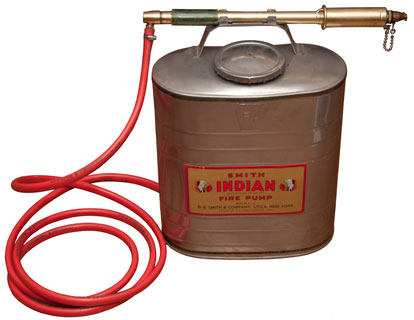
On it's own Smith Indian-Fedco Fire Pump web page. This 5 gallon water than and hand pump uses only a very small amount of water for each squirt. They've been around since 1930 so there's a 90 years of history testifying to it's usefulness.
I have modified this one by adding a longer hose and mounting in to a hand truck so I don't need to carry it. Will probably put it in the back of the Ranger EV ATV Fire Truck along with the McLeod Tool.
Fenix E12 Version 2 Flashlight (See E12 & Ver 2)
This is a small Every Day Carry flashlight that runs on a single AA battery. The energizer L91 Lithium AA now has a 20 year shelf life so is a natural choice for this flashlight and any other battery powered device you want to work in an emergency.
This compares my prior single AA battery Teralux LightStar 100 flashlight
with the smaller Fenix E12 Ver 2. The other two items are:
1. Rambler Swiss Army Knife
2. Tritium (Wiki) key chain light - not glow in the dark, but rather on 24/7.CCRadio2 (see: CCRadio2)
This runs from either the AC line or six internal "D" cell batteries. It can receive FM, AM, 2 meter Ham and Weather band broadcasts.
There are 5 preset buttons on the top which can be preprogrammed to stations that would be of interest in an emergency.
See the BaoFeng radio repeater table below for Mendocino county listening frequencies, mine is 147.39 MHz
Front
Rear
BaoFeng ham Radio (see: BaoFeng Radios)
It's now very easy to get a amateur radio technician license which allows 2-way voice communications on the 2-meter ham band (Wiki).
Here is information on the Mendocino County wide 2-meter system.
Location
Listen
Offset
PL
Laytonville
145.430 -
103.5 Laughlin Ridge
147.390 +
103.5 Sanel Mountain
145.470 -
103.5 Fish Rock
147.270 +
114.8 Hunter Point
147.675 -
179.9 Note: key down for 3 seconds prior to speaking to allow link up.
Vents
2023 May: It turns out that Yellow Warbler birds (Wiki) are able to push or otherwise get past the screen and build nests. That's to say they are adding kindling. I spent some time looking at options for round 2" California approved vents. This may be a problem for any house that has screen on the attic side depending on what's holding the screen in place.
I like the BandGuard FP2011. It has a couple of holes for screws/nail installation. Uses patented ember killing baffle.
8684803 Vent structure forcing a Z-pattern air flow, Brent Berkompas, Brandguard Vents, 2014-04-01, -
11009253 Vent structure, Brent Berkompas, Kelly Berkompas, Brandguard Vents, 2021-05-18, -
Installation Instructions - "T" at top - YouTube: Brandguard Fireplugs (bird holes) vents, 8:56 - the vents shown are probably an early version. The current vent has a plate on the back that's not on the ones shown in the video. Also the diameter of the current FP2011 is 1-7/8" (smaller than the old style) so the step of using a wood block and hammer is not required. This also means that the newer units will fall out if calking is not used. The video shows 3 trips up the ladder for each group of vents: install vents, drill pilot hole & install screws.
Install with two each Everbilt #8 x 3/4 inch Truss Head Phillips Drive Self Drilling (Self Tapping) Screw
Home Depot
SKU #Application
box
(lbs)
Qty
$
295548
Exterior
1
222
13.37
1004558543 Exterior 5
1070
39.98
The Front has 37 hexagonal holes each 0.148 across the flats. area each = 0.01897, area total= 0.702 sq in.
The back plate has 217 round holes with an i.d. of .050, area each= 0.0019635, or a total area = 0.426 sq in. - This is a potential problem in that just doing a retrofit will mean the attic is no longer getting the attic ventilation (Energy Star, Bob Vila) most web pages say 1 sq ft of vent for every 300 sq ft of attic floor area.
The area of the existing 2" i.d. hole is PI = 3.142 sq in.
But the screen has some unknown filling factor which might be 50% so the effective area might be 1.571 sq in. but is probably higher since the filling factor is probably lower.
Both the Vulcan VER2.pdf (Louvered face) and VER2M (mesh face) have a coating of Intumescent (Wiki) paint on the inside of the hexagonal core. The idea is if flames heat the coating it expands and closes off the vent to keep flames from going into the attic. This is far beyond keeping embers out of the attic. The Wiki/Problems mentions that they may fail because of environmental factors and I think these coatings have a limited life, i.e. after some years they cease to work. They are also about $15 each independent of quantity. They are supposed to be installed using a special calk which sounds messy, time consuming and expensive.
7413024 Self-closing vent assembly, John Simontacchi, Steve Beck, Ronald J. Loar, Vulcan Fire Technologies, 2008-08-19, -
There are 3 dimples that may work to hold this vent in a 2" hole.
EmbersOut only makes rectangular vents, none for 2" "bird holes".
9822532 Gable vent that blocks fire, rain and water, George John Sherry, 2017-11-21, -My house has open eves rather than soffits (Wiki). The screen in Fig 1 appears to be 1/8" mesh rather than 1/4" mesh. But the Social Wasp (Wiki) nests might be a fire hazard. Need to test one. The inside baffle was put there to keep blown in place insulation (Class 1 fire rating) from blocking the vent. But it also will bounce any hot embers up to the bottom side of the roof (2 bounces total) which may put them out? Has this been tested with the NIST Fire Dragon?
Gutter Guards
The idea is to keep kindling from accumulating in the rain gutters. If a hot ember landed in the gutter the kindling can light the roof on fire.
I got the EasyOn GutterGuard on sale at Costco and have them installed on my house.
Fig 1 new in box
Fig 2 As installed
Do It Yourself Defensible Space Inspection (ReadyforWildfire / Cal Fire LE-100 form)
Zone 0 is within 5 feet of the house.
Zone 1 is within 30 feet of the house or any structure.
Zone 2 is in the 30 to 100 feet distance.
At the bottom of the form and on the back are illustrations which are coded with the same letters used in the check list.
Exterior Sprinklers
The above information on hot embers suggests that 2" or 3" (2023: that seems like a lot?) of rain fall has the effect of preventing ignition. It's not clear how since tall trees that were not directly whetted by the sprinklers did not burn. Maybe something to do with humidity. In the above references the exterior sprinkler systems used 3/4" impulse type sprinklers with a 3/16" nozzle. But these use a lot of water.
External Sprinkler Systems and Defensible Space: Lessons Learned from the Ham Lake Fire and Gunflint Trail.pdf
ConclusionPublicResource.Org - Using Water Effectively in the Wildland/Urban Interface - Portable Sprinklers - 9:59 -
Experience with the Ham Lake Fire in northeastern Minnesota demonstrated that external wildfire sprinkler systems can be highly effective at protecting structures and their surrounding vegetation from wildfire damage and destruction under certain conditions. Sprinkler systems are not a panacea however; they must be regularly tested and maintained, and even then, are not guaranteed to be 100% effective. When effective, there are several management challenges during wildfire events that still need to be addressed (e.g., getting property owners to evacuate when warranted and supplying propane to run the systems). Finally, Firewise principles and practices must be emphasized, with sprinkler systems as another tool on the Firewise list.
Note: the above comments are mainly about the propane powered water pumps which needed to be refueled and some did not start.
Note in this YouTube video that the burning house is surrounded by green trees, i.e. is was not a wave of fire that ignited the house.
Garden Hose fitting to left.
Stake and foot step may be re-bar.
4' or 5' 1/2" iron water pipe and full circle 1/2" sprinkler.
10:36 "Home owners can play a role here too by using their own sprinklers to raise the moisture level in the area long before the fire arrives."
2023 Note: It's now considered a bad idea for homeowners to use the public water supply because when that's done it drains the storage tanks (Ref Brooktrails). So if you use outdoor sprinklers you need to have your own water supply.
Rain Rate
Sprinklers are specified to generate some radius circle of coverage and flow rate given the input pressure. The area of the circle and the flow rate can be converted into a rain rate expressed in inches per minute, hour or day. One of the papers suggests that 2" of rain will offer protection. But another suggests that it's the change in humidity that may be the key while yet another suggests that all that's needed is to wet the surface. The Fine Dead Fuel Moisture YouTube talks by the U. of Montana suggest that 0.2" of rain will lower the Probability of Ignition to it's minimum, so I'll try putting down 1/4" of rain and see what happens to the PIG. (July 2022: It's been over 4 years since I got the Kestrel 5500FW Fire Weather meter and the PIG has never got above 30%. At the peak of the current heat wave on June 26 when it was 104F at the meter (in the shade) the PIG was only 30%. So I have not had the opportunity to see the relationship between inches of rain and the PIG.
After getting the Kestrel 5500FW Fire Weather Meter as of January 2020 the PIG (Probability of IGnition) has not got down to the 10% or 20% level so have not yet had the opportunity to see the effect of exterior sprinklers on the PIG.
I did run a test starting around 50% PIG and saw a 10% decrease in PIG. (2023: I went back and looked at the PIG and it never went above 30%, so I must have been looking at another weather parameter.) See Time To Reduce PIG below.
Light rain might be 0.08 inches per hour, heavy rain might be 1 inch/hour.
Model
Angle
deg
Inlet
Inches
Nozzle
NPT
Nozzle dia
inches
Radius
Ft.
Area
Sq In
Area
acres
Flow
GPM
Flow
Cu In/Min
Rain Rate
In/Hour
10-10
23
1/2
1/8
3/32 (1/16 to 1/8)
36 (30.5 to 41)
586,296 0.093
1.73 (0.58 to 3.71)
399
0.040
14VH
23
1/2
1/8 1/16 to 5/32
29 to 38
0.56 to 2.68
20JH
23
1/2
1/8 1/16 to 5/32
38' to 44'
2 to 5.5
29JH
23
1/2
1/8
7/64 to 5/32
35' to 46'
1.56 to 6.35
L20H
10
1/2
1/8
9/64 (7/64 to 9/64)
34 (28 to 35)
522,962
0.083
3.84 (1.73 to 4.05)
887
0.102
30H
27
3/4
1/4 & 1/8
3/16 x 0.125
49
1,086,186
0.173
9.90
2287
0.126
70CH
21
1
3/8 & 3/8
13/32 x 0.125
72
2,345,166
0.374
30.4
7022
0.180
80EHD
27
1-1/4
? & ?
11/16 x 7/32
82
3,041,865
0.485
49.2
11365
1.16
A given size impact sprinkler (Wiki) there are a limited number of nozzle sizes that will work and those only will work over some range of pressures. But it's not clear what the real limits are.
2020 January - Instead of using two 1/2" sprinklers on the house roof (one at each end) it will be a lot easier to use a single 3/4" or 1" sprinkler on the roof located on the chimney nearest the water meter. At the meter the pressure is around 116 PSI with a flow rate of about 25 GPM. At the top of the chimney the pressure will be about 96 PSI. But the 70CH is rated for up to 80 PSI. Not sure if an extra 10 PSI is a problem or not?
Note the Rainbird 65PJ is a single nozzle sprinkler that only has specifications for a 1/4" nozzle opening where at 80 PSI it has a throw radius of 65' and consumes 16.5 GPM. So not a good match to my water meter. Here's a video of the 65PJ running at 100 PSI
Time to reduce PIG
The experimental setup uses 3 each 29JH sprinklers with 5/32" nozzles. When all 3 are operating the line pressure is 80 PSI.
Based on measured 80 PSI while all three 29JH sprinklers are operating.
That means each nozzle is flowing:
GPM = 29.72 * D2*SQRT(PSI) = 29.72 * 0.15625 * 0.15625 * SQRT(80) = 6.49 GPM
The data sheet says at 80 PSI the radius is 46 feet -> area of 6648 Sq Ft.
6648 * 0.25/12 = 138.5 Cu Ft
6.49 GPM = 0.868 CuFt/min
138.5 / 0.868 = 159 minutes = 2 hours 40 minutes.
and so to get 1/4" of rain they need to be running for 3 hours.
The test on 20 July 2018 for 2 hours was less than it should have been, but it still lowered the PIG from 50 to 40%.(2023: This was a mistake, not supported by the logged PIG data which did not go over 30%)
An approximation (so I don't need to get wet making the above pressure measurement) Assume 5 GPM and 40 foot radius, then:
Area = PI * R * R = 5026 Sq Ft.
A cylinder of water 40' in diameter by 1/4" thick will therefore have a volume of 5026 Sq Ft * 0.25/12 Cu Ft = 104 Cu Ft.
5 Gal/Min / 7.48 Gal/Cu Ft = 0.668 Cu Ft/Min flow rate
104 Cu Ft / 0.668 Cu Ft/Min = 156 minutes = 2 hours 37 minutes.
If the radius is shorter then there will be more than 1/4" of rain.1/2" Brass Full Circle Impulse sprinkler Head
I'm looking into the Rain Bird 20JH 1/2" full circle sprinkler head (also 20A, 29JH?). It's a very simple design (reliable) and is used in high volumes for irrigation. It's also all metal construction which may be important for fire use in the case where the system is turned on after the heat/fire is nearby. They list for about $25 each, but supposed equivalents are made by other manufacturers for less than half the price, but it remains to be determined if they are as good for this application. Any plastic part would disqualify a sprinkler for this application if it's melting would in any way degrade the performance.
1997901 Water sprinkler, Orton H Englehart, Apr 16, 1935, 239/230, 239/259 -
This is the classic Rainbird impact sprinkler.
Wiki - "The name Rain Bird was taken from the Native American legend of a bird that brought rain, in reference to the "bird-like" appearance of the impact sprinkler in action"
3022012 Partial circle water sprinklers, Carl R Sharp, John E Streeter, 1959-05-18 - uses "S-tube" to keep water off walkway.
3309025 Self-cleaning spray deflector wedge for sprinklers, William R Malcolm, 1965-07-06 - Wobble Wedge - self cleaning including the bearing between wedge and its shaft. If main arm jams there will still be some dispersion of water jet so as not to erode the soil.
4330087 Impulse sprinkler deflector spoon, William A. Wood, Frank J. D'Amore, Rain Bird Corp, 1980-03-24 - allows for nozzle hole aimed a little off in angle or for a nozzle drilled on purpose at a different angle.
65PJADJ-TNT - Brass Impact Sprinkler - this has a 1" inlet, 57' to 65' radius, 50 to 80 PSI line pressure, up to 1" per hour (I will need regulator just for these).
35ADJTNTB – ¾” Inlet Brass Impact Sprinkler - 3/4" inlet, maybe 30' radius
20JH 1/2" Inlet Full Circle Brass Impact Sprinklers - 1/2" inlet, 35 - 80 PSI, 35' to 44' radius (Full circle is much simpler, less to go wrong).
Underhill Product Code: SI100F Impact sprinkler - 1" Full Circle -
Manual valve and galvanized iron plumbing. Minimal plastic parts. Birds sitting on swing arm???? Freeze protection = drain valve
Report examines effectiveness of outdoor sprinkler systems during wildfires - External Sprinkler Systems and Defensible Space: Lessons Learned from the Ham Lake Fire and Gunflint Trail - "Experience was that with the cooler, moister environment created by the sprinklers, embers were suppressed before they were able to ignite the fuels, whether structures or vegetation. "
Recommendations:
3/4" inlet heads with 3/6" nozzle
Pipe
Size"
GPM
3/4
8
1
15
2
60
3
>60
At least one 1-1/2" NH (National Hose) threaded Fire Department standpipe.
There is a question about "shelter in place".
Wildfire Sprinklers Inc. - full big $ systems
- Wildland Outdoor Sprinkler Information
- Sprinkler Spare Parts List
- Is a Wildfire Sprinkler System Right for You?
Rainbird Sprinkler Heads
Nelson Sprinkler Heads - Catalog (7 MB) - 1" & 1-1/4" inlets & much larger Big Guns - Brochure - 2", 3" or 4" inlets.
Nelson F33 (full circle) impact sprinkler head, 3/16 & 1/8" nozzles at 80 PSI: 13.25 GPM & 106' diameter. [The F33V the same except 113' diameter)FEMA Fire Sprinklers - Interior & Exterior
FlameGuard® CPVC Fire Sprinkler Products - some compatibility issues with non CPVC parts of the water system. Iron pipe may have a number of advantages for this application.
RainBird: Impact Sprinklers, Pressure Regulators, 20JH.pdf, 20JHparts.pdf, L20H.pdf, 20ADBJ.pdf, 20VH.pdf, Sprinkler Irrigation Uniformity (14VH, 808A, 14070)
Testing impact Sprinklers
The local Ag supply stores only stock the RainBird 14VH (or the equivalent WeatherTec 10-10) 1/2" impact sprinkler heads since these are popular with local vintners. They are designed to work with nozzles as small as 1/16" or up to 7/64". I think the key design parameter is the rotational inertia of the moving arm and the design of the vane that the water strikes located at the end of the moving arm. As the flow (gallons/minute) gets higher the inertia of the arm must increase. In order to work with low flow rates, like the 14VH, the mass of the moving arm needs to be small.
First test 14VH and 10-10 1/2" sprinkler heads.
Both of these sprinkler heads have a double sided plastic spoon that pivots into one of two positions. In one position it tries to push the moving arm into the frame and so no movement results, but that position is unstable since the force also causes the spoon to move to its other position where it causes the moving arm to swing.
3563465 Water sprinkler,
MARTIN FOREMAN , 1968-03-26 - maybe this spoon design?
Fig 1 Parts for first test. $69.46 for parts shown in photo.
3/4" x 5' iron pipe (matches 3/4" male garden hose fitting) 3/4"-1/2 coupling for sprinkler head. 5/8" x 2' re-bar for stake.
1-1/2" hose clamp is too small for 3/4" pipe AND 5/8" rebar.
RainBird 14VH, 20JH & 29J are all 1/2" inlet Impact Sprinklers
Note the frame on the 14VH and 20JH are the same, they differ in the swing arm.
The 29J is a much larger sprinkler.
Fig 2 RainBird 14VH 1/2" sprinkler head with 3/32" nozzle
Wobble Wedge
Fig 1 WeatherTec 10-10 1/2" sprinkler head with 3/32" FC2 nozzle. Wobble Wedge
RainBird 20JH
Ratings: 5/32"max (comes w/o nozzle) <= 60 PSI
Fixed spoon instead of Wobble Wedge.
RainBird 29JH
5/32" <+80 PSI
@ 45 PSA & 3/32": 70' dia & 1.71 GPM
Nozzle
is 1/8" pipe thread (0.405 OD from theory).
measures 0.345 at exposed dia.
3/8" across flats
@ 45 PSI & 3/32": 72' diameter & 1.73 GPM (100 Gal/hr, 2491 Gal/day)
1.73 GPM = (x231) 399 cu in./min
72' dia = 4071.5 sq ft = 586296 sq in
Rain rate = 0.04" hour or about 1" per 24 hour day
Nozzle
measures 0.400 at exposed dia.
Thread Size: 3/8-24NF and 1/8 NPT
7/16" across flats
YouTube: WeatherTec 10-10 1/2" Full Circle Sprinkler 3/32"FC Nozzle
RainBird P2A Pressure Gauge
40 PSI at end of hose.
Fig 2 Mounted on 1/2" Orbit Metal Ring Base, Model 58030
Arm has just started to move or is just finishing movement.
Fig 2: 36' radius.
Rubber band holding moving arm so nozzle open.
Fig 3: 35' radius.
Rubber band holding moving arm so nozzle open.
Video of 14VH operating at 116 PSI
Note that 1. it works with extreme over pressure and
2. the wobble wedge directs the water both to the
left and right of the nozzle direction.
Nozzles
The impulse sprinklers typically use removable nozzles to allow changing the opening size.
Theory
The pressure and nozzle size determine the water flow rate (gallons per minute or cubic feet per minute). The velocity of the water leaving the nozzle (feet per minute) depends on the pressure. The distance that the water travels (throw radius) depends on the nozzle angle above horizontal and the height of the nozzle above the ground in addition to the velocity. There is wind resistance so the actual throw distance will be less than the calculated distance. The swing arm both powers the rotation of the frame and nozzle and also breaks up the nozzle water stream so that some water falls at distances shorter than the main nozzle stream. Ideally the water falls equally over the full circle. Practically the sprinkler manufacturers recommend some overlap in coverage to even out the rain rate.
The flow rate is closely related to the rotational inertia of the swinging arm. If the mass of water hitting the swing is too small it will not have enough energy to turn the main body. If the mass of water hitting the swing are is too great the swing are will never be able to hit the main body and it will not turn. So there is a range of pressures for a given nozzle size and sprinkler arm inertia where it will work.
WeatherTec FC2 Nozzle - between 30 PSI and 80 PSI the flow varies between 1.70 GPM and 1.80 GPM, the diameter varies between 69' and 77' over that pressure range.
The RainBird 14VH operates between 20 and 60 PSI with flow rates ranging between 1.14 and 1.97 GPM (i.e. a straight, non compensating, nozzle)4492339 Flow control nozzle, Nelson Irrigation Corp, 1983-03-02, B05B3/0472 - pressure compensating
------ laminar nozzle patents ----
4730786 Low noise, flow limiting, laminar stream spout, Walter R. Nelson , CHRONOMITE LABORATORIES Inc - flow restricter for home faucets
5169065 Low noise, flow limiting, laminar stream spout, Walter R. Nelson , CHRONOMITE LABORATORIES Inc -
5472145 Straight Stream Nozzle, Timothy C. Shannon, Steven L. Honeycutt, , Delavan Inc,1994-04-14 - anti swirl - anti turbulence features
5779099 Nozzle with turbulence control member for water gun laminar flow ejection,Bruce M. D'Andrade, (Super Soaker), 1996-06-28 - contains walls to stop water swirl that causes stream to separate. A laminar stream goes farther than a turbulent one.
The nozzles have 1/8" NPT (11/32" tap drill).
Nozzles: 14VH, 20JH, and 25BPJ
(from Harmony Farm Supply)
Note last 2 digits of model number is size in /64 of an inch.
p/n
Size
in 64ths
dia"
SBN104
4/64
1/16
SBN105 5/64
5/64
SBN106 6/64
3/32
SBN107 7/64
7/64
SBN108 8/64
1/8
SBN109 9/64
9/64
SBN110 10/64
5/32
SBN111
11/64?
available?
The Flow rate (GPM) depends on the hole area & water pressure (WSU)
GPM = 29.72 * D2*SQRT(PSI)
Hole \ PSI
20
40
60
80
100
1/16
0.5
0.7
0.9
1.0
1.2
5/64 0.8
1.1
1.4
1.6
1.8
3/32 1.1
1.6
2.0
2.3
2.6
7/64 1.5
2.2
2.7
3.1
3.6
1/8 2.0
2.9
3.5
4.0
4.6
9/64 2.6
3.6
4.4
5.1
5.9
5/32 3.2
4.5
5.5
6.3
7.3
There are 7.48 Gallons in a cubic foot. This can be used to convert the
flow rate in Gallons per minute to Cubic Feet per minute.
0.133681 * GPM = CFPM
If the CFPM value is divided by the area of the nozzle in sq ft (PI*D*D/4) the result is the velocity of the water leaving the nozzle in Feet per Minute.
The GPM can be calculated for a water nozzle based on the pressure and orifice diameter. Based on the GPM and orifice diameter the nozzle velocity can be calculated, but the trajectory can NOT be calculated because it's too complicated so the values shown in the data sheets are based on empirical measurements.
An idea for testing nozzles using just a garden hose.
Tap drill depends on application.
A drill press is handy.
Tap backed out and thread tested with nozzle, then a little more
tapped, until nozzle tightened half way.
Tap
sizeThreads
per inchDrill size w/ taper
pipe reamerDrill size w/out
taper pipe reamerStraight pipe
threads1/8
27
21/64
0.328125
Q
0.332
11/32
0.34375
SGN104 (4/64 = 1/16") Nozzle.
Maximum range at 106 PSI input just under 30', but breaking up a lot.
Maybe more range at 45 PSI input.
The range a calculated the same as for a cannon, for example see: Calculate the Range of a Projectile Fired at an Angle.
Shooting a cannon at a particular angle with respect to the ground.Where S is the range, g is the acceleration of gravity, theta is the elevation angle. But this does not work for cannons or for water sprinklers because of air resistance. For cannon balls and bullets there are calculations that can be made that more or less work for practical purposes (see Ballistics).
It's interesting that for the case above, where there is no air resistance the angle (theta) for maximum range is 45 deg. But the actual sprinklers have an angle that's half of 45 deg, ie 22.5 deg rounded to 23 deg. The 20JH, with a 23 deg angle gets much more range than the L20H, with a 10 deg angle, when using the same nozzle at the same pressure. The 29JH is rated for higher pressures and hence the longest throw distance of all the 1/2" sprinklers I've looked at.
Commercial Outdoor Fire Sprinklers
Company
Size
Comments
One Stop Fire Products 3/4"
Pumps and related outdoor fire suppression products
WaveGUARD
varies
Tank & Pump system with flame detector(s?)(ember detector being worked on)
20140338930 Fire Mitigation System, waveGUARD, 2014-05-15
20160175633 Hydo Fire Mitigation System, waveGUARD Corp, 2013-05-15
Steadfast Safety Services ?
no details started 2016
FlameSniffer misters?
they make 360 degree flame sensor US13041679 Fire& ember Detection (4300nm) Wildfire Automated Sprinkler Protection
Custom
Gutter mounted - garden hose feed to each one.
Roof Saver Sprinklers 1/2"
"V" bracket for roof ridge - garden hose feed.
Spiedr 1" kit This uses a huge amount of water: where's it going to come from? DIY
3/4"
Ham Lake Fire and Gunflint Trail.pdf - propane powered pumps fed from lake
Platypus
US9403175 Sprinkler - shrub type sprinkler head
6167971 Fire Protection system, Paul Van Lingen, 1998-10-06, - under eve sprinklers
Calls:
Publication number Priority date Publication date Assignee TitleUS1489A * 1840-10-16 Rendering Building FireproofUS218100A * 1879-07-29 Improvement in fire-extinguishersUS647875A * 1900-02-09 1900-04-17 Ernest Piepenbrink Fire-extinguishing apparatus.US1507350A * 1922-06-28 1924-09-02 Eric T Franzen (Wall washer) Sprinkler headUS1620142A * 1925-04-24 1927-03-08 Albert T Walraven Fire extinguisherUS3576212A * 1969-03-10 1971-04-27 James H Siler Fire-shielding device (tower for wetting roof)US3583490A * 1969-01-24 1971-06-08 Arloa Bunnell Fire protection system(recirculates roof and wall water)US3858618A * 1973-01-10 1975-01-07 Factory Mutual Res Corp Piping for fire protection systems(small holes to cool pipe)US4330040A * 1980-05-12 1982-05-18 Ence Gerald R Fire prevention and cooling systemUS5083618A * 1990-09-24 1992-01-28 Hayes Gary D Bush fire protection of building(above-roof & below gutter spray)US5165482A * 1991-06-10 1992-11-24 Smagac Dennis E, Intelagard Inc Fire deterrent system for structures in a wildfire hazard arean (water management, but using what sensors?)US5692571A * 1996-11-21 1997-12-02 Jackson; Willie C. Building exterior fire prevention systemUS5732511A * 1996-10-18 1998-03-31 Scott; Jackie May Roof mounted fire protection system
Water Tank Based Outdoor Sprinklers
I'm in a FireWise community and we have regular meetings on fire safety. It turns out to be a bad idea to use the water utility as a preventative measure prior to a fire since it depletes the storage tanks. So, if you're going to use outdoor sprinklers they should be fed from your own water storage tank(s). If a fire is nearby there's a real probability that the electricity will be turned off, so yo need an independent water pump to power the sprinklers.
Honda WH20XT Water Pump
The Honda WH20 Gasoline powered water pump is in my opinion the ideal choice. I looked into these when thinking about the ATV Fire Truck. 2022 July 21 I bought a WH20 because of supply problems related to the CARB SORE rules now in effect. When I found out that this pump was in stock at Motorsports of Ukiah I bought it. They prepped it and delivered it to my house the same day. It is in the Serial Number range starting with WAKT- so this is a link to the manual. Shop Manuals & parts catalogs can be purchased.
Fig 1
Fig 2
Pump Priming (owner's manual pg 18)
This water pump needs to be primed. But if the pump is located below the tank water level once it's primed it should stay primed as long as water can not escape. I'm thinking of the 1" Rainbird sprinklers being at the top of the chimney and the water pump below them and below the water level in the tank. So once the system is primed it will stay primed. Another consideration is winter freezing where it's a good idea to have all the plumbing dry.
Also the above arrangement means the suction head (which needs to be less than 26 feet) will be negative, meaning that the discharge head will be higher than that provided by the pump, i.e. the tank water level to pump puts positive pressure into the pump inlet.
There needs to be a strainer in the inlet plumbing to protect the pump.
Operating the pump dry will destroy the pump seal! It would be nice if that did not happen. The design of the system might include sizing the water tank capacity so that the pump would not run dry after running until out of gas starting with a full gas tank.
Engine: 163cc (9.9 cu in), 4-stroke, GTX160T2, 3.1L (0.82 gallon) fuel tank, about 5 Horsepower
Pump: Max total head 45m (148 feet), Max discharge capacity: 450L/min (118.9 Gal/Min),
The discharge curve goes from about 150 feet head( 65 PSI) @ 0 GPM in a straight line to 100 ft (43 PSI) @ 70 GPM, then a straight line to 10 ft (4 PSI) head @110 GPM.
This spread sheet includes the WH20 discharge curve (blue) and 1, 2 and 3 each Rainbird 70CH sprinkler fitted with a 13/16" main nozzle and a 1/8" spreader nozzle. You can see that the two points for the 70CH always fall on 40 and 60 GPM. When 3 each 70CH sprinklers are used the line does NOT intersect the pump curve, i.e. the pump can not supply 3 each 70CH sprinklers at the same time.
70CH data from: Rainbird 70CH - (pdf) page 12: The top table is for a 70Ch with the spreader nozzle plugged.
The second table is for a 70CH with a 1/8" spreader nozzle.
Fig 1 70CH (13/16 & 1/8")
Fig 2 70CH (7/32 & 1/8")
It seems that the optimum would be the combination that supplies the most water per minute.
1 HP is lifting 550 pounds 1 foot in 1 second, so:
HP = (G/M * 8.33#/G * #/SqIn * 2.31 ft/#/SqIn)/(60sec/M*550#) - so somewhere between 60 & 80 GPM (46 & 35 PSI) is the Horsepower peak.
A similar Honda engine is rated at 230 grams of gasoline per horsepower hour of operation. Gasoline is about 2800 grams per gallon.
230g * 5 HP = 1150 grams per hour at 5HP peak power or 1150/2800 = .41 Gal/hour.
0.82 Gal tank / .41 Gal/hour = 2 hour run time, so between 60 GPM * 60 min/hr * 2 hours = 7200 and 9600 Gallons pumped.
Accessories
A kill switch (maybe pressure operated) that turns off the engine if it runs out of water. That way you could let the pump run until it ran out of gas or the water tank ran out of water.
Electric start add on. This would allow remote starting of the sprinkler system
Fire Insurance
After over 20 years with the same company I received a "will not be renewed" notice on my homeowners policy. This was based on the Verisk Insurance Solutions (Fireline Overview, ISO Risk Analyzer, Wildfire Risk) computer program that "scores" you house based on its location. The problem is there is no option to mitigate the risk.
Google search: California wildfire insurance score -
The information on hot embers (above) says there's a lot that can be done to mitigate the danger of living in a brush area, but that Verisk computer program makes no provision for mitigation measures so in my opinion is very flawed. Note that in after fire photos you will see some houses burned to the ground and next door other houses that are still standing. The Verisk program makes no provision for the standing houses. Also note that being in a brush or Wildland Urban Interface (WUI) area has nothing to do with hot embers. Hot embers are generated whenever wood burns and it does not matter if a tree or house is burning. That's to say houses located in urban areas are just as susceptible to hot embers as houses in WUI areas. A case in point is the housing development in Rohnert Park (Santa Rosa, CA) where some houses burned while neighboring houses did not. The same thing happened in the 9 Oct 2017 Redwood Valley fire.
Shelter in Place
This is a generic phrase (Wiki) commonly used in active shooter situations, chemical spills &Etc. There is some talk of it's use in relation to Wildland Urban Interface (WUI) fires.
NFPA: WILDFIRE + EVACUATION: Stay or Go?
2001 Australasian Fire Authorities Council - Appendix H: Australasian Fire Authorities Council Paper - the beginning of the Shelter in Place idea.
2004 Preventing Wildland/Urban Interface Fire Disasters, Santa Rosa, CA, Ethan Foote -"Houses protect people and people protect houses. Research conducted following major bushfires in Australia has concluded that the most buildings lost in bushfire situations are the result of initially small fires started by sparks and embers. A building will generally survive the initial passage of a fire front providing adequate preparations have been made. People who are well prepared and take shelter in their homes have an excellent chance of surviving a bushfire. Also, houses will survive if people remain to extinguish small fires started in and around them. "
2005 Homeland Security paper: Sheltering-In-Place During Wildfire, Is it a Viable Option? 2005
2008 Fire Center UC Berkeley - Living with Fire in Chaparral Ecosystems - Lessons Learned (Australian bibliography with links) -
California Chaparral Institute - An Appeal to California’s Fire Agencies - "While creating defensible space is a critical component of fire risk reduction, it fails to address the main reason homes burn - embers landing on flammable materials in, on, or around the home, igniting the most dangerous concentration of fuel available, the house itself." ".... many homeowners have complied with defensible space regulations only to see their homes burn in a wildfire." - PROTECTING YOUR HOME FROM FIRE "Nearby vegetation was not a big factor in home destruction." - Fire Safe Techniques -
Mass Notification
The idea is to let people know there's danger and they need to take action. There's not a single system that will do this, it takes a number of parallel actions.
Long-range acoustic device (Wiki: LRAD)
As of 2023 I think an LRAD system that allows for spoken warnings with specific data is far and away a better option than any siren, horn or whistle. This would need to be a system with backup power so that it would work after a few days of power outage.
2023Aug18-YouTube: Maui Wildfires: Why Sirens Didn’t Go Off, 8:56 - they may cause confusion since people don't know the meaning of the sound. LRAD is much better. They essentially PA systems that work over long distances. Normal PA systems sound garbled at long ranges. See the Maui Wildfires video for examples. The USS Cole bombing (Wiki) was October 2000 which lead to the need for a long range loud hailing device.
Genasys - makes LRAD models that cover about 300' to 3 miles.
5889870 Acoustic heterodyne device and method, Elwood G. Norris, Turtle Beach (American Technology Corp), 1999-03-30 - similar to the Ultrasonics - Holosonics unit except this is much higher power.
5859915 Lighted enhanced bullhorn, Elwood G. Norris, Turtle Beach (American Technology Corp), 1999-01-12, -
6016351 Directed radiator with modulated ultrasonic sound, Hans-Joachim Raida, Oskar Bschorr, Turtle Beach (American Technology Corp), 2000-01-18, -
6389146 Acoustically asymmetric bandpass loudspeaker with multiple acoustic filters, James J. Croft, III, Genasys Inc (American Technology Corp), 2002-05-14, - cited by 82 patents,
6704426 Loudspeaker system, James J. Croft, III, Genasys Inc (American Technology Corp), 2004-03-09, -
PS Turtle Beach (Wiki) made sound cards that had a good reputation.
Siren, Horn, Whistle
The idea here is to let people know there's an emergency and maybe what type of emergency. How loud the device is depends on the input power and its efficiency. So, a hand cranked siren will put out much less sound than other devices that have larger power inputs. Devices that will work without electricity are desirable since that's likely to happen in a forest fire by the time the alarm is needed. I like the idea of using compressed air to sound the alarm. I also don't like sirens since it takes some time for the motor to spin up and spin down so they can not be used to send Morse code. Horns and Whistles can be turned on and off using a manual valve and so may be the best option.
Wolo Manufacturing Corp: Mass Notification Systems, K4-1 Four Horns air alarm, Model 119 Whistle, Model 122 Whistle, they also have horns for aircraft carriers and other very loud devices.
Edwards - Air Driven, Motor Driven,
Wiki: Diaphone Air Horn - Civil Defense Siren - my Gamewell Fire Call Box web page has more on the Diaphone. Gamewell made these for use to let firemen know the location of a problem using a simple code.
Telephone Tree
A neighborhood phone tree is also in place as well as an email list. There might be a night time fire lookout associated with this. Some people have DSL internet service on top of their home land line phone. They are fed from a DSLAM box which in turn is fed by fiber optic cable. The DSLAM box has some batteries about the size used in motorcycles and so only work for maybe a day. After that those households will no longer have land line phone service. So they probably can receive the initial notification, but after a day may not have phone service of any kind.
There is a county wide emergency notification system that calls people effected by some emergency. I've received calls when the local bridge was flooded, meaning I could not get to town using the shortest path, and maybe not at all if the adjacent bridge is also flooded (a common occurrence). On 9 Oct 2017 I got an evacuation call, but was not in the immediate area of the fire. So this system still has some bugs.
A neighborhood phone tree is also in place as well as an email list. But the land line phones may or may not be working. Cell phones don't work at my house and so not a reliable way to communicate.
There is a state wide CAL Fire notification system that depends on cell phones, but my cell does not work when I'm at home.
Commercial Radio Stations
The local FM station KXYZ - was the best source of fire information during the fire that started 9 Aug 2017. They carried live the press meetings (although there were technical problems).
I think something people wanted to know was the boundary of the fire.
Ham Radio
We are also looking into using ham radios to communicate an alarm to our neighborhood and for neighbor to neighbor communications. This can not be done radio to radio because of the mountains and valleys, but might work with VHF/UHF radios through a repeater. This probably require an outside antenna on a house or on a car.
Yaesu VX-7 or BaoFeng hand held 2 meter - 440 MHz radios.
Note that people without ham radio licenses can still buy radios and listen in. These are around $100 including a good antenna for the house and car.
Fig 1 J-Pole Antenna for 2 meters & 440 MHz (Arrow Antennas: OSJ - Model OSJ 146/440 Dual Band J-Pole)
Mounted on Premier stainless steel 6' - 12' telescoping painters pole (Home Depot sells them one at a time ~$20)
The idea is to see the effect an outdoor antenna in house to house and house to repeater coms.
PS the elements are parallel, distortion due to camera looking up at angle.
On the Wednesday 7 pm simplex net the antenna worked well with the paint pole standing on the ground, i.e. with the antenna below the first floor gutter elevation. It will work much better when roof mounted.
Fire Weather (See Kestrel 5500FW meter)
I've moved this from a reference to a main topic since it's going to be part of the strategy related to sprinklers. The idea is that when the Probability of Ignition (PIG) is high the sprinklers can be operated for about 3 hours to add humidity and to wet the kindling on the ground. Then the PIG can be measured again. I'm hoping that the effect will last a day or more, but need to try it out.
Major wildfires seem to occur in October. This is after one or more years of drought at a time when there has not been any rain all year and there is wind. These conditions are part of the fire weather forecast.
Test 1
July 29 2018 - ran for 2 hours. The PIG was peaking at 50% on prior days and staying at 50% for a few hours. The sprinklers seemed to knock down the PIG to 40%. Have changed the logging interval to 30 minutes.
Test 2
3 August 2018 - Evacuation warning - on about 4:40 pm plan for 3 Hours (about 1/4" rain equivalent).
Northern California Geographic Area Coordination Center - The initial map shows Northern California fire areas. If you mouse over Day1 through Day7 you can see the projected fire weather color coded on the map.
Fire Weather Zones - Mendocino county is CAZ276. If the map shows brown or red there is high fire danger.
Talking with Steve at the NCGACC the effect of sprinklers on the local humidity would be very small since wind would easily bring in new air with it's own humidity. BUT . . . any moisture would put out an ember that landed in it.
California Fire Weather Page - Click Map for counties
Probability of Ignition (Incident Response Pocket Guide pg 82)
Reference Fuel Moisture (%) depends on Temperature & Relative Humidity.
Then shade, slope and corrections for dead fuel moisture content.
The Kestrel 5500FW hand held weather instrument has PIG built in so might be an easy way to keep track of this at a local level and to monitor the effect of using the sprinklers. As of 11 April 2018 the lower cost Kestrel weather instruments do not have PIG built-in. There is an option that adds a wind vane so that the instrument knows the direction of the wind and adds LiNK which is their name for BlueTooth connectivity to Apple and Android phone apps or a desktop dongle.
YouTube: SFE Webinar: Simple FFMC - New Fine Dead Fuel Moisture Estimation Tool - Fine Dead FMC (on line hour to hour calculator explained in video) - much more modern than the Probability of Ignition Tables in the Pocket Guide. It looks like 0.2" of rain will saturate the wood. The rate it moves out of the wood depends on the fuel surface temperature and humidity, but typically it takes longer for the water to leave. This may mean outdoor sprinklers will work with a small amount of water in fire prevention mode (not fire fighting mode).
U of Montana - Weather App -
There are three codes (fire danger ratings): 1. the Fine Fuel Moisture Code relates to the surface, 2. the Duff Moisture Code (DMC) is for the organic layer below the surface (maybe up to 4" deep), 3. the Deep Duff Code (DC) applies to the ground below the Duff layer.
YouTube: Duff Moisture Code - works in a way very similar to the FFMC but with longer time constants.
YouTube: Fine Fuel Moisture Code - % Fuel Moisture = 147.2 * (101-FFMC) / (59.5 + FFMC)
FFMC
0 - 79.9
80 - 85.9
86 - 88.9
89 - 91.9
92+
The FFMC can be changed using outdoor sprinklers prior to a fire to lower the fire danger.
Initial Spread Index (ISI) - combines the FFMC & Wind (but wind is not under our control).
Map Your Neighborhood
As part of the FireWise community program we are making a map of our immediate area.
Map Your Neighborhood - a generic program that can be tailored for specific needs.
Some FireWise map features are:
- Fire Hydrants
- Water Tanks
- Ponds/pools
- Roads: primary roads (labeled) and secondary roads/driveways
- Watercourses/Streams (if you can, identify whether seasonal and perennial streams - label with names)
- Contour layer (40' contours should be good)
- Gates - Homes
- Potential safety zones (see: References Incident Response Pocket Guide pg 6)
- Township/Range and Sections
- Boundary of your Fire Safe Area
Phos-check Retardant
Learned about this on the blancolirio YouTube:Phos-Chek Fire Retardant for Home Defense - It's not clear to me that this is what saved the house, there was much prep and there was a ground crew of firefighters there.
The Label has the key information that's not on their normal web pages. But this label does not specify which formulation of Phos-check it is.
Also lists some patents:
6620348 Fire retardant compositions containing metal ferrites for reduced corrosivity, Perimeter Solutions, 2003-09-16
6780991 Biopolymer thickened fire retardant compositions,Perimeter Solutions, 2004-08-24
6802994 Fire retardant compositions containing ammonium polyphosphate and iron additives for corrosion inhibition,Perimeter Solutions, 2004-10-12, -
6828437 Use of biopolymer thickened fire retardant composition to suppress fires,Perimeter Solutions, 2004-12-07, -
6852853 Methods for preparation of biopolymer thickened fire retardant compositions,Perimeter Solutions, 2005-02-08, -
6905639 Fire retardant compositions with reduced aluminum corrosivity,Perimeter Solutions,2005-06-14, - " However, concentrated liquid fire retardants and solutions prepared therefrom are extremely corrosive to aluminum and brass and mildly corrosive to other materials of construction used in handling, storage and application equipment." This patented mixture complies with USDA Specification 5100-304b. This one looks good, but is aimed at air tankers, so is a little overdone for home use from a plastic sprayer.
Suppliers
Akron Brass -Booster Reels- Nozzles - YouTube -
Continental (Goodyear) - Water Hoses - Water Hoses -
eDarley - Darley - Wildland -
Eley / Rapid Reel Wall Mount Garden Hose Reel Model 1041 - Amazon - p/n 1044 Extra-Capacity Kit - 5/8"id X 175' Garden Hose -
Elkhart Brass - YouTube - Nozzles Hannay - Booster Reels -
Firequip - YouTube (installing fittings on hose, kink resistance)
Honda - Water Pumps - WX (light weight), WT (trash), WH (High pressure), WMP (Multi Purpose), WSP (submersible)
Key Hose -
Kochek - Hoses -
Reelcraft - General Water Reels - 601044-150 3/4" x 150' Hose Assembly w/ Garden Hose Fittings, 300 psi - Amazon - GCCA33118 L 175' x 3/4" Reel - S601026-200 200'x3/4" hose -
1. Can the reel be mounted on the side of a house either directly or using an optional bracket?
2. Are the hose assemblies available with the correct male thread for connection to the reel and with a standard Garden Hose Thread male outside end?
3. On the motorized reels can the hose be pulled out by hand when there is a power failure?
R&R Fabrications - bags for many uses - Fire Hose -
Fyre-Tec™ Fire Rated Windows -
Steel Sliding Fire Windows -
Bandguard Vents -
Barricade Fire Blocking Gel - this has some problems: It must be applied immediately prior to the fire, i.e. you can not apply it a day or week ahead since once it dries out it's no longer effective. It is difficult to apply to all exposed faces, i.e. any surface irregularity will shadow a surface which is not protected. "Depending on weather conditions such as sunlight, wind and humidity, Barricade can be expected to last from a minimum of 6-8 hours to a maximum of 24-36 hours." Shelf life of concentrate is 4 Years if kept from freezing or getting above 120 deg F. If there's not a fire you have to remove it, not easy.
Spiedr - 1" impact sprinkler kit - This uses a huge amount of water: where's it going to come from?
Wildlife Inventory Systems - Willits, CA - custom mapping
Firezat™ inc. - similar to space blanket, comes in a roll for wrapping houses.
References
National Wildfire Coordinating Group
Lessons Learned
Advances in Fire Practice
Handy pocket reference
Incident Response Pocket Guide
PMS461
NFES 1077
5-1/2" x 3-1/4" pocket guide
Table of Contents
Operational Leadership
Color codes sections:
Green: Risk Management
Gold: How to Properly Refuse Risk
Yellow: Vehicle Accident Operations
Pink: First Aid
Blue: Aviation User Checklist
White: Other References
Safety Zone = 8 to 40 times vegetation height (different from IRPG which says 4 times flame height.) in all directions.
YouTube: Latest Research on Estimating Safety Zones - 8x for flat and no wind (note radiant and convection related to camp fire).
If people and vehicles are in center of safe zone then the more room they take up the larger the safe zone needs to be.
Helicopter landing has additional requirements.
YouTube: The How, What, and Where of Safety Zones: Recent Findings -
Probability of Ignition (Incident Response Pocket Guide pg 82)
Reference Fuel Moisture (%) depends on Temperature & Relative Humidity.
Then shade, slope and corrections for dead fuel moisture content.
The Kestrel 5500FW has PIG built in along with Fine Dead Fuel Moisture (FPFM).
Cal Fire - Ready for Wildfire - Hardening Your Home - 32 Questions about your home and online assessment - Building Materials Listings - Search Listing Services: -FireWise
FireWise is part of the National Fire Protection Association Wildfire branch.
Fire Safe Mendocino is our local branch.
Ready for Wildfire - Hardening Your Home -
Creating a safety zone for use in a wildfire emergency
Australia August 20, 2017: Where to take refuge in your home during a bushfire -
While they say 1/4 to 1/8" metal vent screening - the testing I've seen says 1/8" metal is much better since it stops embers that might ignite some attic items.
It's interesting that the problem with embers escaping from a fireplace have been known for many years and my house came with screens on all chimneys.
US Berkeley: Fire Information Engine - Homeowner Wildfire Assessment - an online report (but it has problems) - Center for Fire Research and Outreach at UC Berkeley - Homeowner's Wildfire Mitigation Guide: This web page has many sub pages each addressing ember problem areas and has excellent suggestions & Videos:
Be Ember Aware (1/2) & Be Ember Aware (2/2) - Excellent videos
Living With Fire - Fire Adapted Communities - Community Wildfire Protection Plans (CWPPs) -
http://disastersafety.org/wildfire/
National Fire Protection Association/Wildfire - Preparing homes for Wildfire - "Research around home destruction vs. home survival in wildfires point to embers and small flames as the main way that the majority of homes ignite in wildfires."
National Wildfire Coordinating Group -
Incident Response Pocket Guide, PMS 461, NFES 1077, January 2010 - not the current version but still lots of good info.
PMS 447-1 Water Handling Equipment Guide, June 2013, pg 122 Hose Flow Rate Determination by the Splash Method - simple to do.
A 3' long pipe with known inside area (A) and known distance above flat ground (h) and the distance along ground from a point directly below pipe opening (D) has the following flow in Gallons per minute:The 2 1/2 Inch Handline - article about use of classic fire hose and effectiveness of smaller lines.
GPM = (3.61 * A * D) / SQRT(h)
Table C3 gives recommended values for various pipe sizes and flow rates. Here are values for sizes applicable to homeowners:
The GPM per inch of horizontal distance can be used to mark the ground in GPM if you have a permanent setup.
Pipe
Size
"
Flow
range
GPM
Suggested
height
"
GPM
per inch (D)
1/2
2 - 10
18-3/4
0.25
3/4
5 - 20
29-7/8
0.35
1
10 - 40
38-9/16
0.5
1-1/4
20 - 100
45-13-16
0.8
California Fire Safe Council - Reducing Wildland Risk brochure
Mendocino County Fire Safe Council - Fire Prep Resources -
YouTube: National Fire Protection Association - Making Your Home Firewise -
National Fire Fighter - Hose Packs
Handle for fire hose HANDLE-X™
YouTube: Self locking twin donut roll - Single Donut Roll - no carry bag needed
Insurance Institute for Business & Home Safety (IBHS) - has a wind tunnel with a bunch of NIST firebrand generators
Wildland fire spot ignition by sparks and firebrands, Fire Safety Journal 91 (2017) 2–10, - "After ignition the wild fire can propagate as a combination of a surface fire and a firebrand spotting assisted fire." . . "Moisture content of the fuel is one of the most important parameter (sic) of the problem, if not the most important, because it determines the limiting condition for ignition of a fuel in terms of its natural state." -> suggests to me that outdoor sprinklers should be very effective.
Combustion and Fire Processes Laboratories U.C. Berkeley - Ignition by Embers and Hot Particles - Defensible space -
Community Wildfire Hazard Assessment and Ranking -Homeland Security papers with "Wildfire" in title - search results -
Community Wildfire Hazard Assessment form.pdf
User Guide.pdf
Builders Wildfire Mitigation Guide - tabs at top of page for various fire critical components
Under Codes & Standards:
California Building Code Chapter 7A
ASTM Committee E05
NFPA -NFPA - 1141 Fire Protection Infrastructure, 1143 Wildland Fire Management, 1144 Reducing Structure Ignition Hazards from Wildland Fire
ICC - Wildland-Urban Interface Code.pdf - the pdf is just the front pages ending with the table of contents
Art and Science of Wildfire (Training): 1. Fire Orders, 2. Fire Operations Doctrine, 3. Crew Cohesion, 4.Aviation Resources, 5. Sky (Weather) Watching, 6. Indians Fire, 7. Predicting Fire Behavior, 8. Man Against Fire, 9. Fire Weather Forecast
National Fuel Geyser Awareness - if the cap is opened on a vaper locked chain saw (or other gas powered tool) the fuel may squirt out and douse the operator, and if flame is nearby set the operator on fire. YouTube: Fuel Geysering: Predictable? ans: No. - Videos -
Video - Using Hand Tools to Suppress TN Forest Fires - Personnel Protective Equipment (PPE) & hand tools
True North Gear - NFPA-1977 pants and shirts
Mercedes Textiles - Forestry Accessories -
QTAC - UTV/ATV Line
House Numbers
It's important that houses and the streets that lead to them are clearly marked. Remember that a fire truck may be approaching your house from either direction along the street.
A problem in the recent fire was that there were duplicate street names in the county and that was a huge problem for mutual aid fire fighters who didn't know that fact.
There also may be a problem with identical house numbers where it's not clear if the number applies to the main or cross street.
Photos of reflective house numbers mounted to be in the headlight beam of fire truck.
Driving down street
Driving up street
Even in daytime you can see the reflective effect from camera flash
Larger sign from SmartSign.com - 911 Address Signs - Diamond Grade
Contact Info for street signs:
Mary Mayeda, Mendocino Co Firesafe Council410 Jones St. C-3Ukiah, CA 95482
462-3662 or 272-4513
Evacuation Zone
#KnowYourZoneMendo - click on the magnifying glass (search), enter your address and find your zone. From me it's 2UKV09.
Backup
Starting with the 2017 fires, continuing with the 2018 fires, and into 2019 power failures seem to be more frequent. Hence the need to have back up for things like house lighting, house AC power, room/camping lights and flashlights along with batteries. See Generator
For battery powered devices there's a big advantage in using Energizer L91 Lithium AA cells. They work below freezing temperatures and they have a 20 year shelf life (I'm guessing it's even better but not yet tested by actual aging).
I've been testing a number of AA flashlights and have discovered a new factor that's how intuitive the operation is. One of them reminded me of setting a Japanese watch that only has two buttons. Where how long you hold a button and in what sequence you press them is important, i.e. without an instruction sheet it's pretty much impossible to do. Some of the flashlights are in a similar position with an even more limited control system but with a number of modes such as high power, medium power, low power, blink that can be selected by doing something. This is OK if you use the light everyday, but is not if you need to use it after a year or more without touching it in the mean time.
Flashlights
2019 Wildfire Community Preparedness Day Application Period Begins - ends March 1, 2019.
2019 Wildfire Community Preparedness Award public voting page For Brooke Clarke.
See: Back Up Light - Candidates for some flashlights that look promising.
I carry a TerraLux 100 single AA pocket flashlight in my pocket all the time along with a Swiss Army knife and Tritium light. Note that it's a bad idea to have your car keys connected to any other item, and especially an item that's heavy, because of the problem with GM (and maybe other brands) ignition switches that turn off the engine and freeze the steering if pulled down too hard. Since this light gets daily use it's powered by an ordinary Energizer E91 Alkaline battery. When my daily pocket flashlight was the Mini Maglite the Duracell batteries corroded so I no longer use that brand. Maglite replaced the flashlight since the warranty covered both Duracell and Energizer.
1. Teralux LightStar 100 Single AA flashlight
2. Rambler Swiss Army Knife
2. Tritium (Wiki) key chain light - not glow in the dark, but rather on 24/7
Note that TerraLux specializes in flashlights that are extremely energy efficient. Once while visiting a relative the battery ran out. I ask if they had any dead AA batteries waiting to go to the recycling center. I used one of the "dead" AA batteries for the next few months in this flashlight.
Car
I'm replacing the Fenix TK35UE with the Streamlight Survivor. The reason is the TK35UE uses a pair of 18650 Li-Ion batteries which need to be recharged. There is a way to do that if the batteries have USB charging ports and the correct cigarette lighter socket to USB adapter and the correct USB cable are used, but that's too many "ifs". Much better to give up a little light output for a flashlight that takes the same Energizer L91 Lithium AA cells and the other battery powered lights, like the Streamlight Survivor.
House
Room lighting
Started with the 3-pack of Cascade 1170792 Collapsible Lantern from Costco for $20. These are cheap and do not contain any electronics that make for energy efficient operation so not recommended for this application. I have two other lanterns on order as of 2019 February 22, more once they are tested.
Streamlight Siege AA LED Lantern
Fenix CL23 Lightweight Camping Lantern
AC Generator
I have been learning about Generators for a number of years. There are a number of considerations.
2019 July: I now have a generator and house wiring for it, see: Generators
PG&E
The plan is to shut off the AC power if there is a threat that wires will start fires. The PG&E decision will be based on a number of factors such as the combination of:
The following web pages might have some info, but as of 7 Aug 2019 almost none of the above is on line at:
- A Red Flag warning by the National Weather Service (see Fire Weather above for links)
- Humidity below 20%
- Forecast winds generally above 25 MPH and wind gusts in excess of approximately 45 MPH
- Condition of Dry Fuel on the ground and vegetation (moisture content) [i.e. Fine Dead Fuel Moisture (FDFM) and Probability of IGnition (PIG)]
- On-the-ground, Real-time observations
https://mesowest.utah.edu/cgi-bin/droman/mesomap.cgi?state=CA&rawsflag=3 - for Ukiah only the airport Temp, dew point, humidity, and wind are available.
High-definition cameras by 2022: https://alertwildfire.org/ - as of 7 Aug 2019 is a dead web page.
Note with the advent of Smart Meters, PG&E knows the location of outages very shortly after they occur and the extent of the area.
PG&E Outage Map - (800)-743-5000 is the main PG&E number. The menu tree allows reporting outages.
I tried to use the PG&E on line form to ask what phone number someone can call to find out when power will be restored and got:
We are unable to process your request at this time
If their web page does not work when there is no outage, it's very unlikely it will work when there are major outages. The main phone number will be out of service in an emergency because it will be overloaded.
California Codes
14 CA ADC § 1299.03 Requirements - Ref LinkCal Fire list of links
Zone 1: from the building structure out 30 feet.ElDorado County: Title 14 Natural Resources, Division 1.5 Dept of Forestry, Ch 7 Fire Protection - FireSafeRegs.jpg - Hydrants: 2-1/2" NH male
Zone 2: from 30 feet to 100 feet but not beyond the property line.
Draft Dec 1, 2020: Title 14, Div 1.5, Ch 7, SubCh 2, Articles 1 - 5 "State Fire Safe Regulations, 2021"
Smoke Detectors
Starting 2024 June 30 manufacturers can only ship smoke detectors that comply with UL 217 (Wiki). But stores will continue to sell non compliant alarms until they run out. So it's up to the buyer to look for UL217 approval.
YouTube: The Dangerous Flaw in 87% of Smoke Alarms, 16:36 - excellent explanation and demonstration of the problems.
The current standard ionization type detectors have a big problem with smoldering fires caused by things like furniture.
Ionization type detectors respond to open fires much faster than photoelectric detectors.
Also ionization alarms need monthly cleaning (Maintenance.pdf) and beep to signal that they need to be cleaned and/or reset. This causes them to be disconnected.
Ionization alarms are triggered by non harmful particles in kitchens, i.e. have a high false alarm rate when placed near a kitchen.
These problems have been addressed in UL 217.
Can Australian and US Smoke Alarm Standards be Trusted? - 2013
11788942 Compact optical smoke detector system and apparatus, Shrenik Deliwala, Analog Devices, 2023-10-17, - ADPD188BI - YouTube: ADI: Smoke Detector Reference Design Solution Meets New UL-217 Specifications, 4:05 - uses IR and blue LEds, i.e. spectrometry.
Smoke Alarm Warning Org -
60 Minutes Australia: The alarming truth: Part one, @6:59 two types of smoke detectors; Part 2 -
Related
Forest Gardening - Irrigation
Kestrel 5500FW Fire Weather Instrument
Smith Indian - Fedco Fire Pump
Smart Meters - water & electric
Gamewell Fire Call Box
Links
PRC68, Alphanumeric Index of Web pages, Contact, Products for Sale
Page Created 14 November 2017




